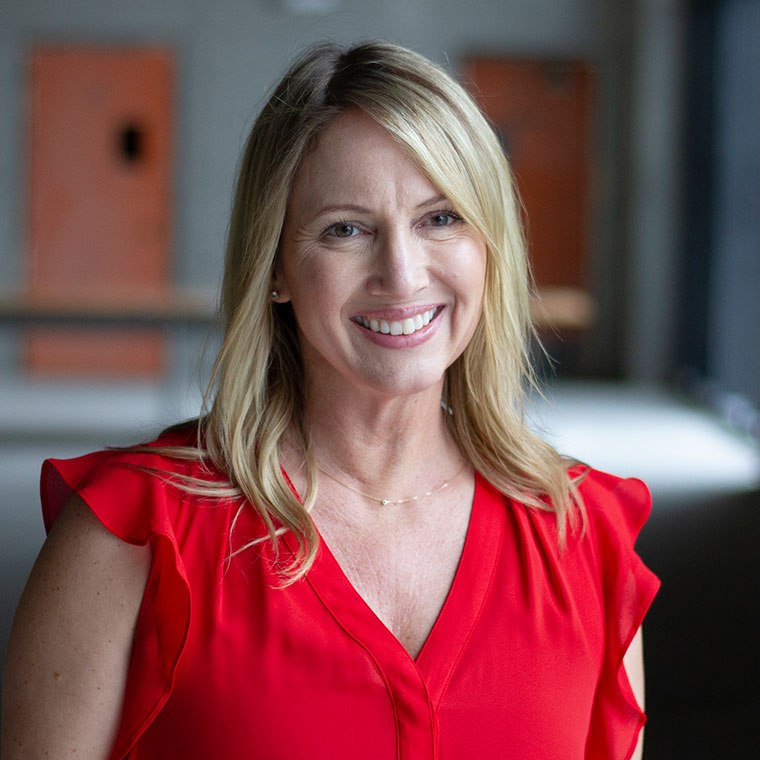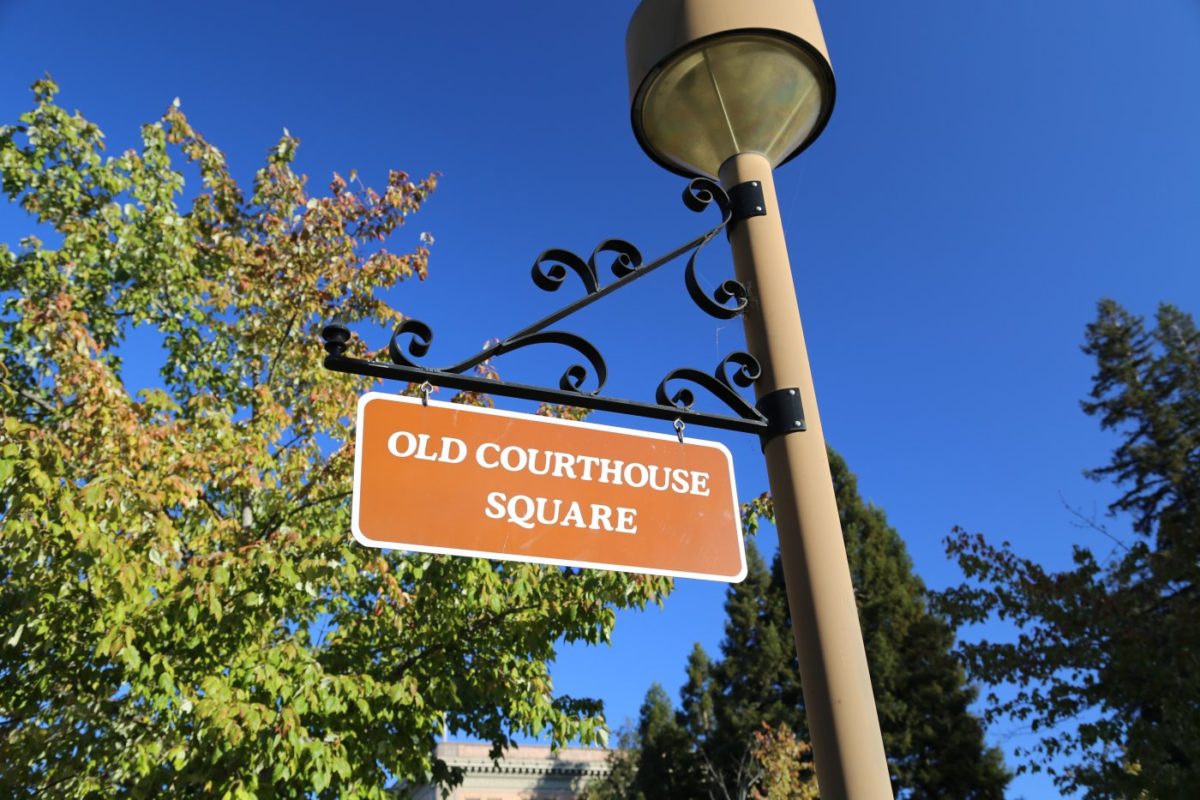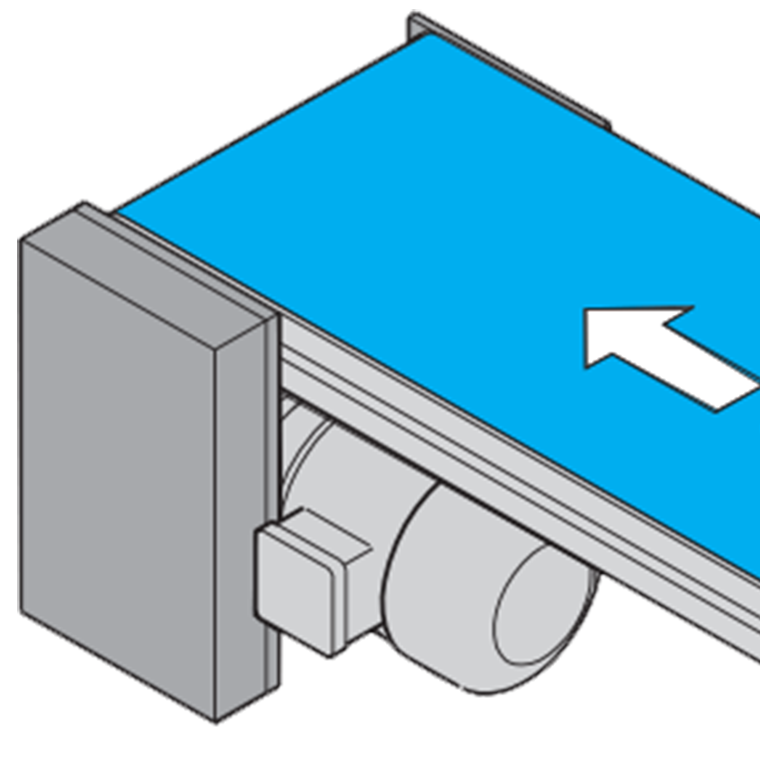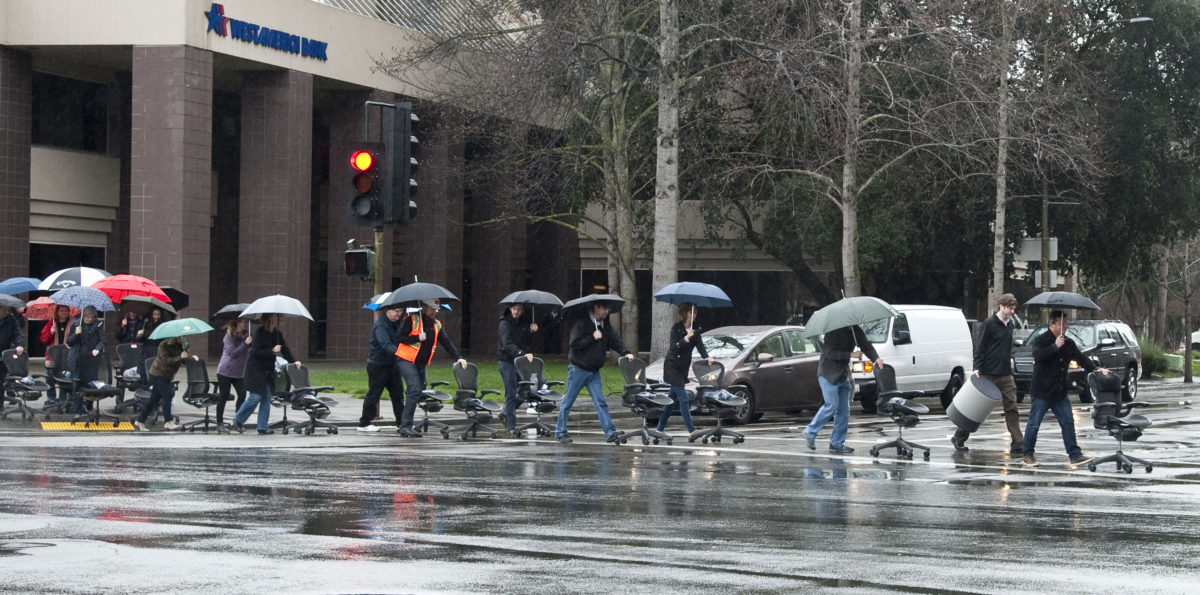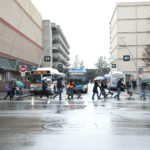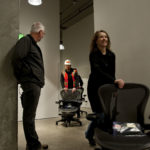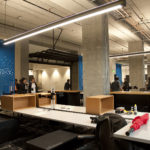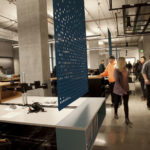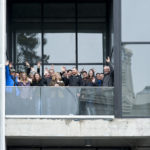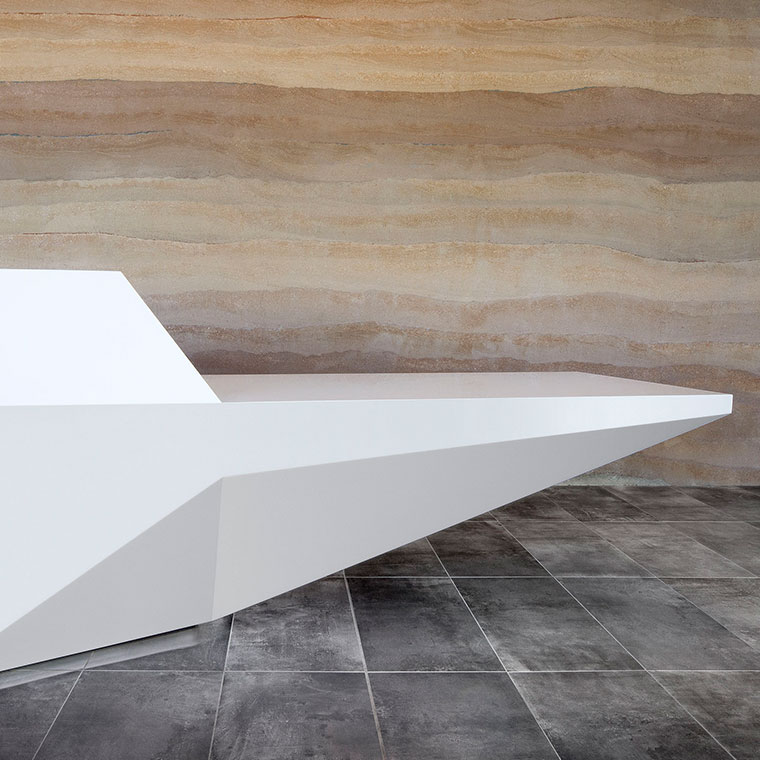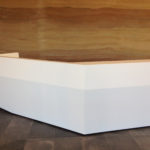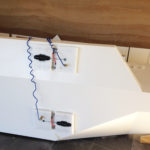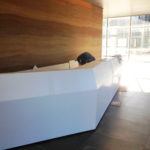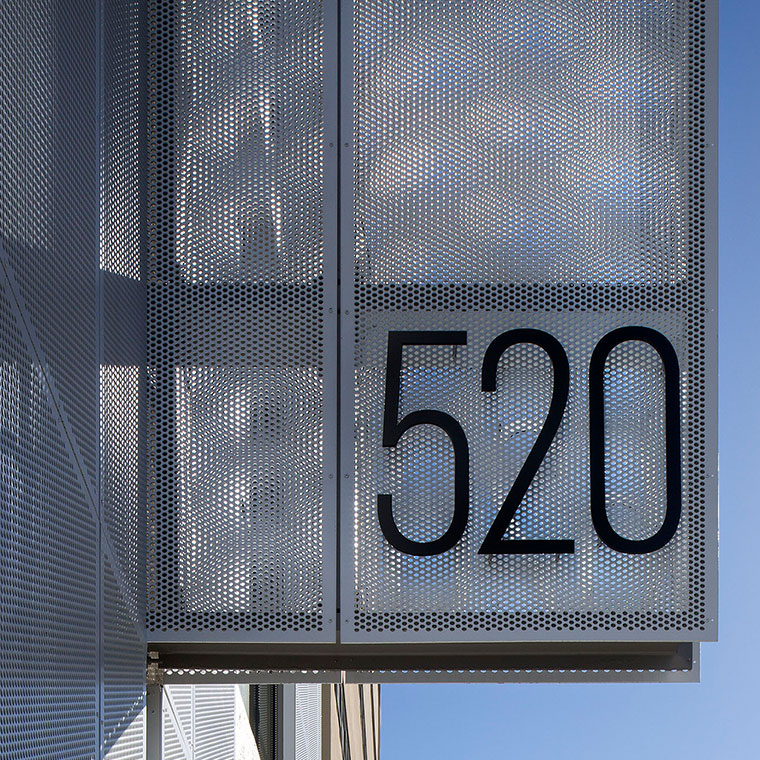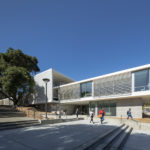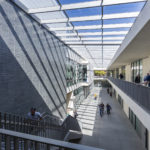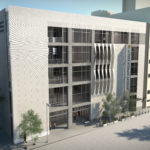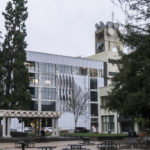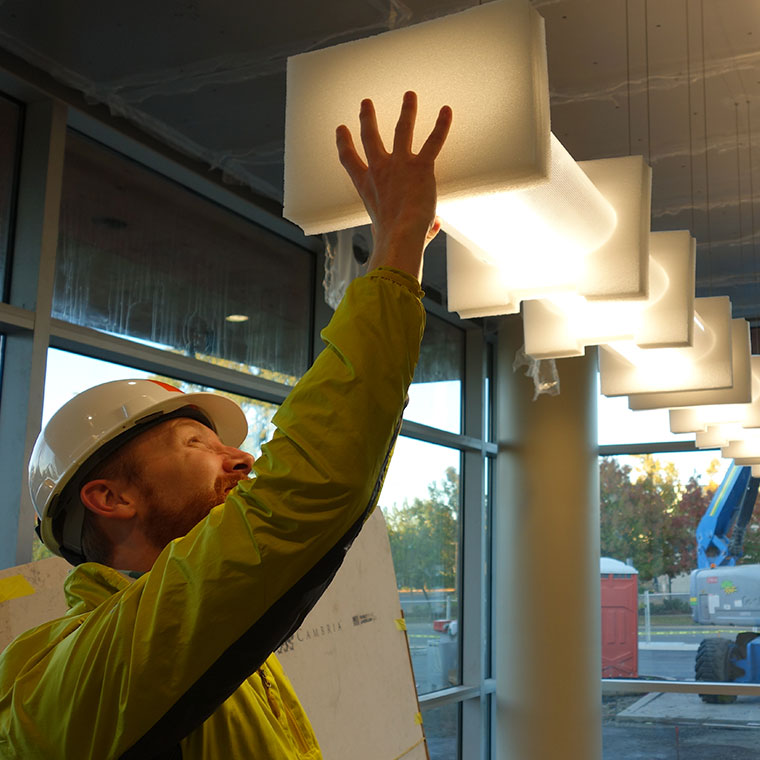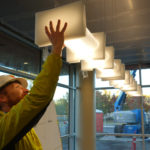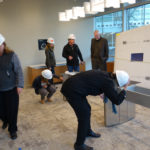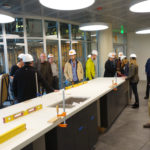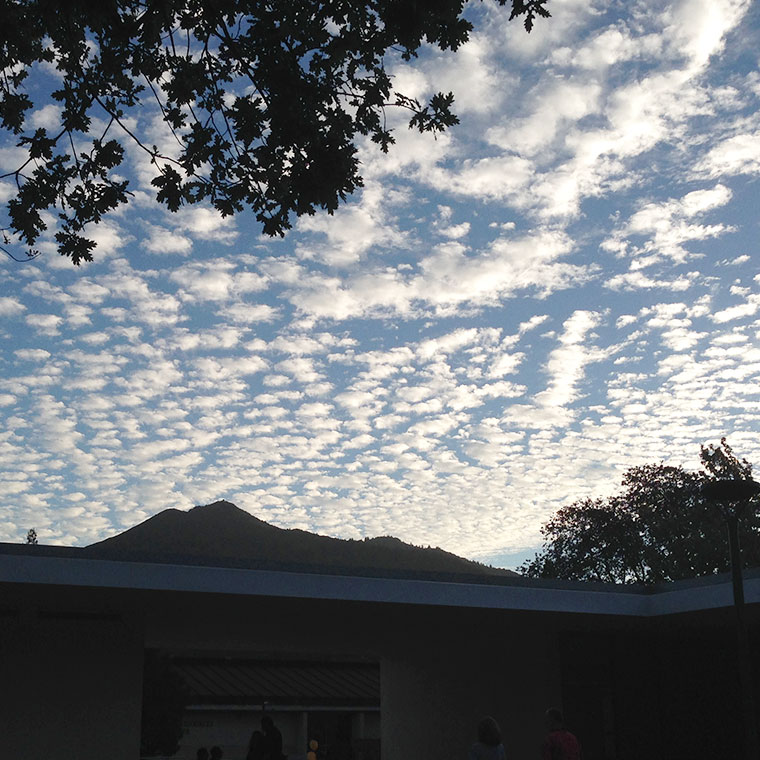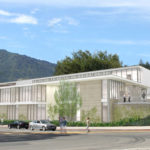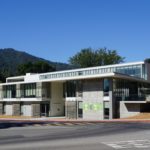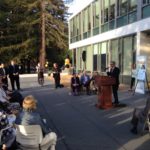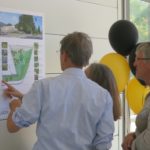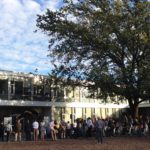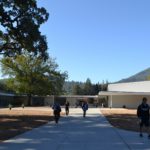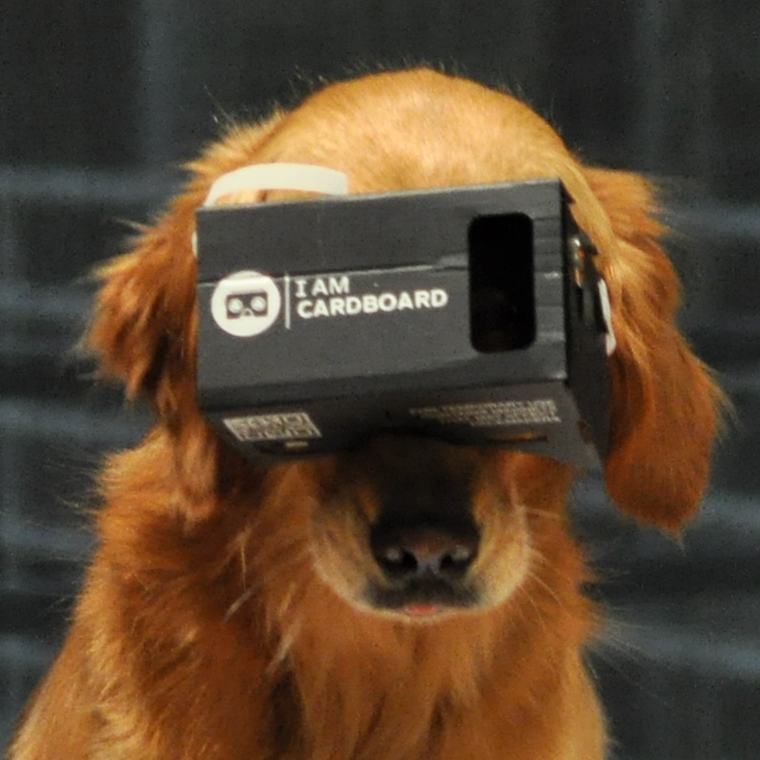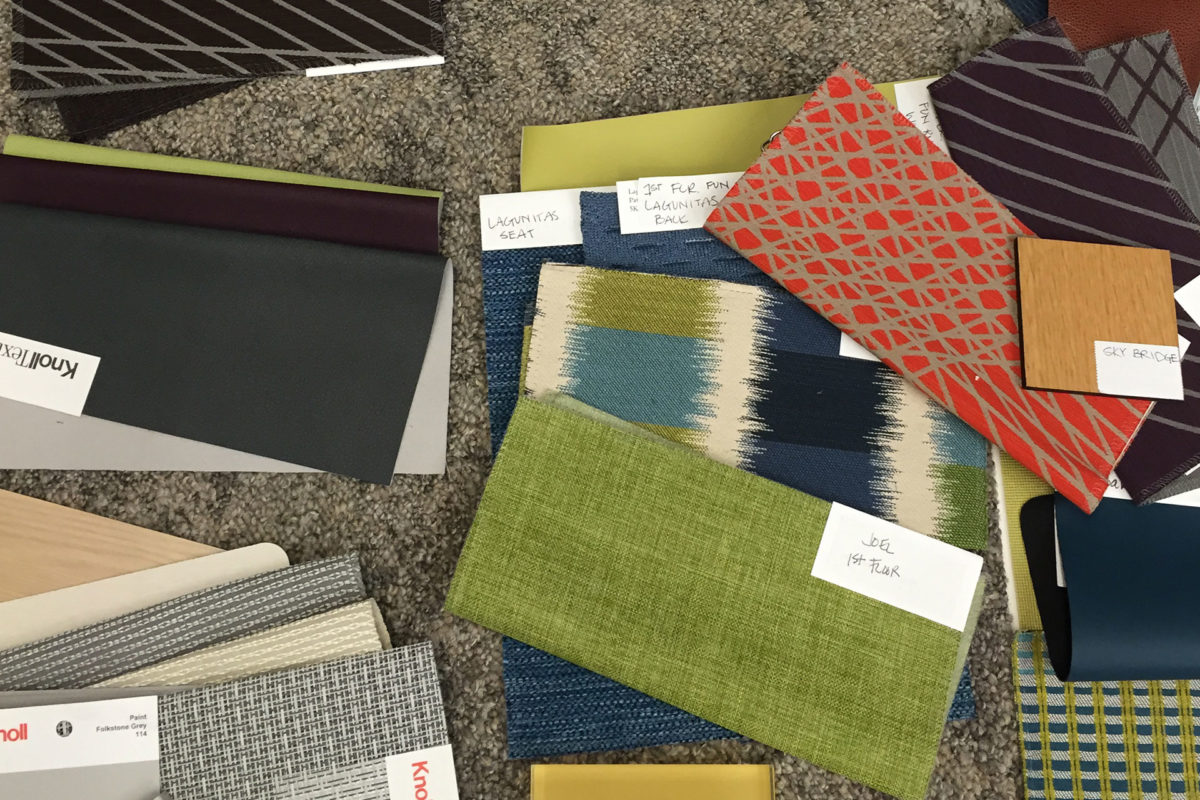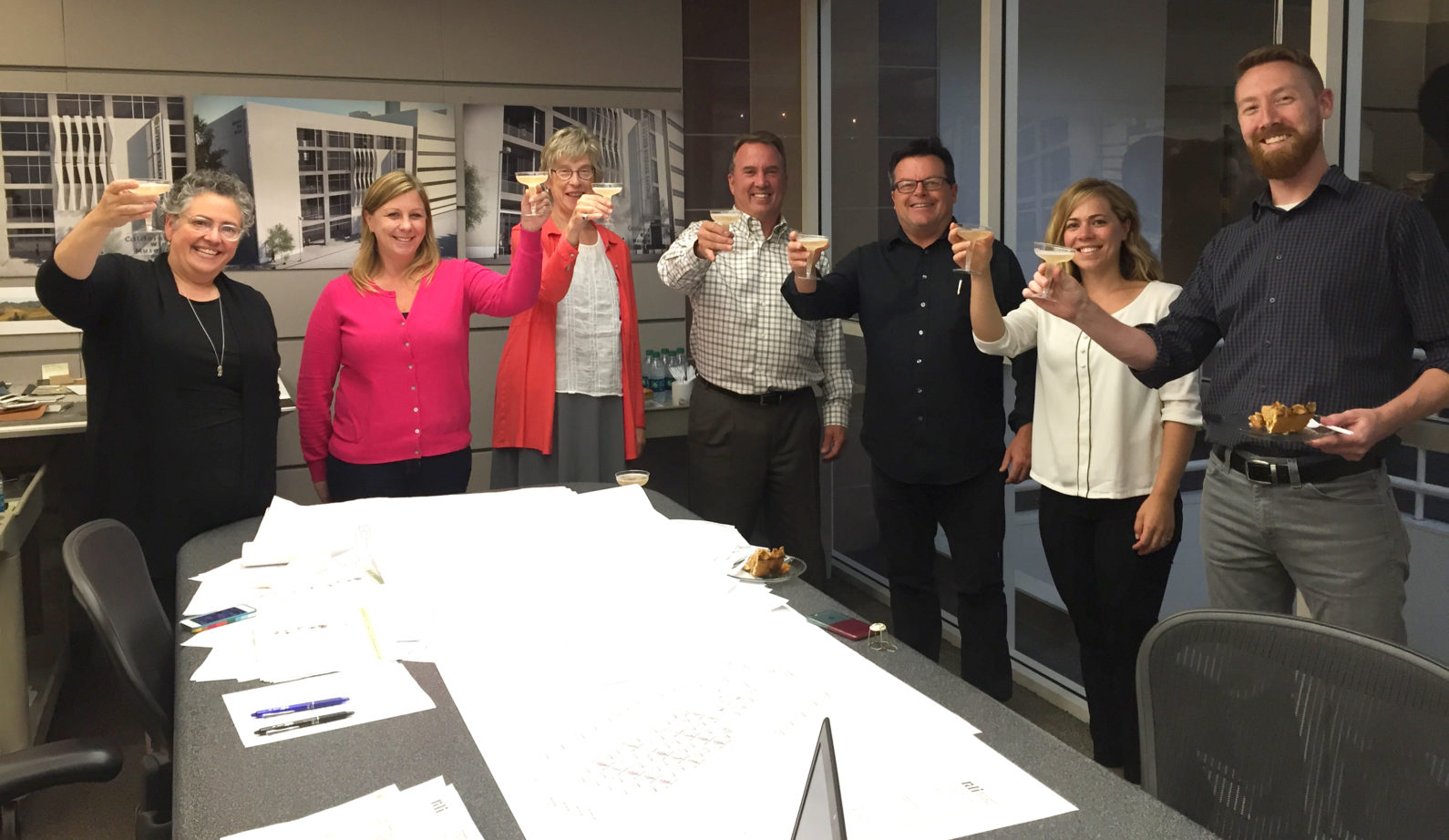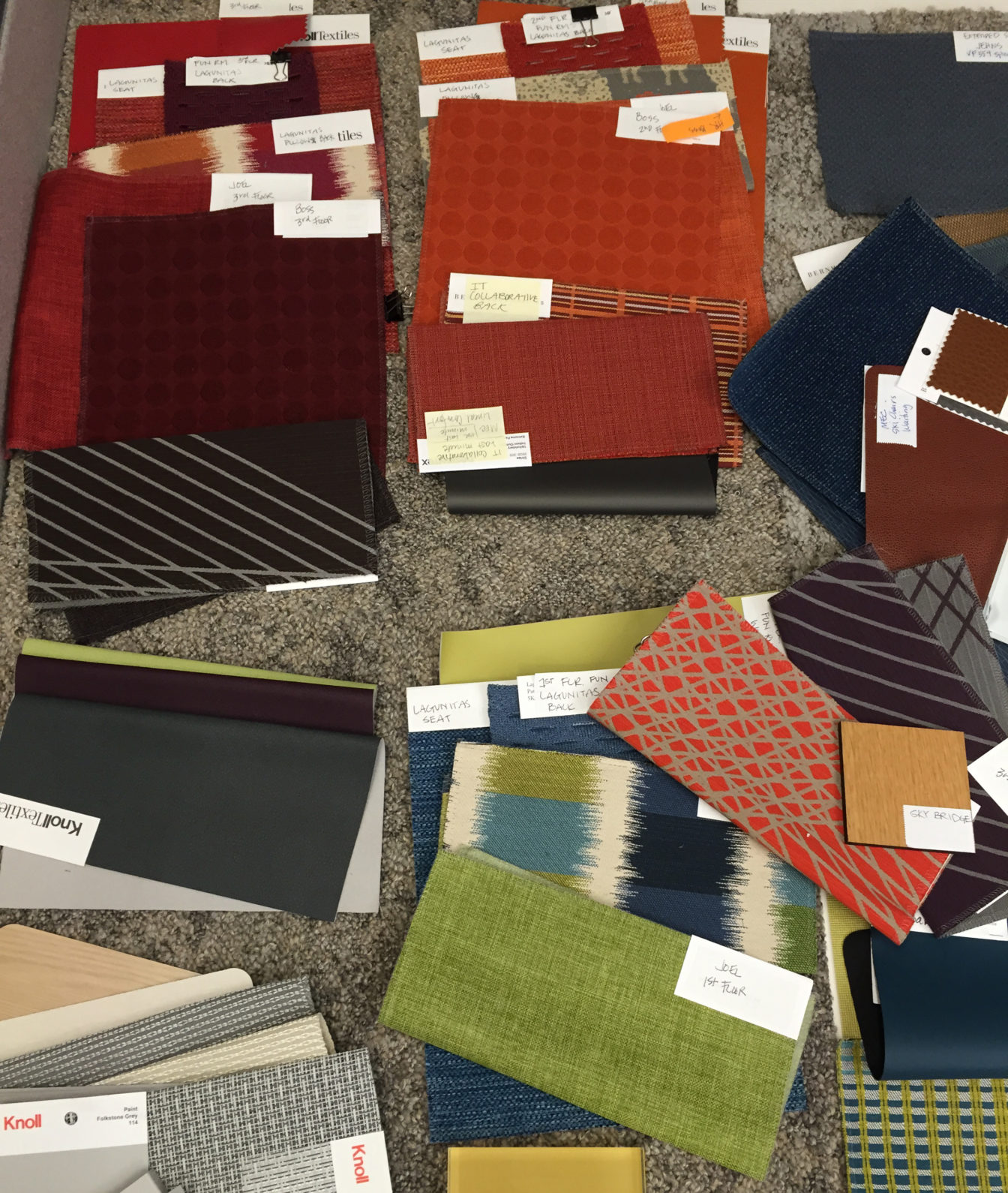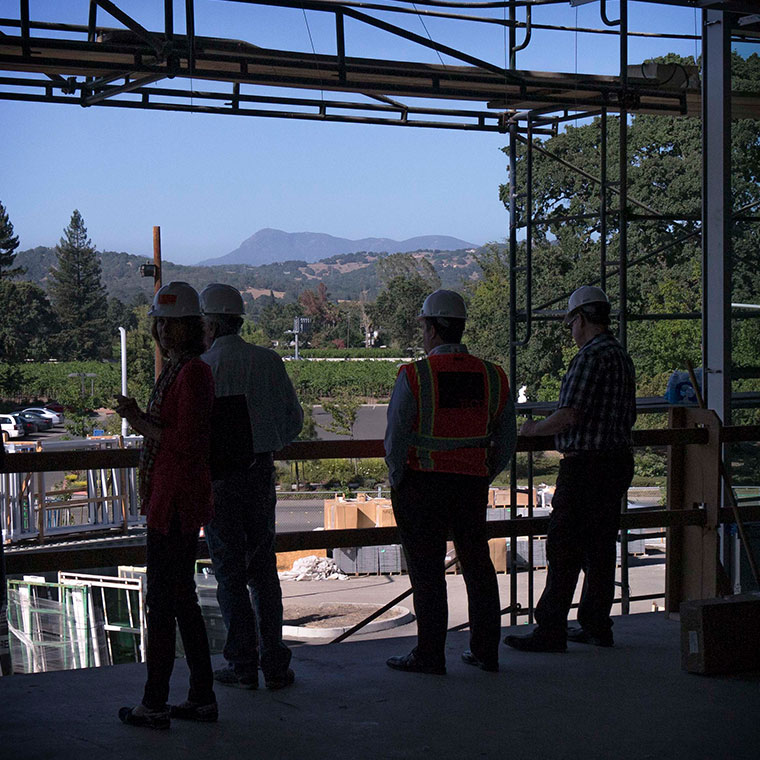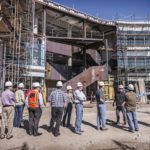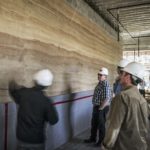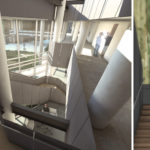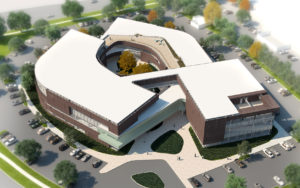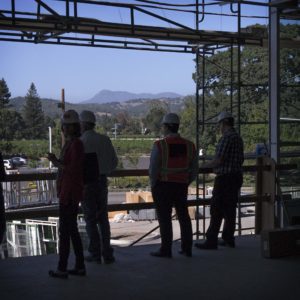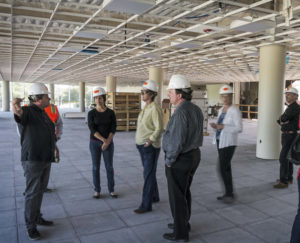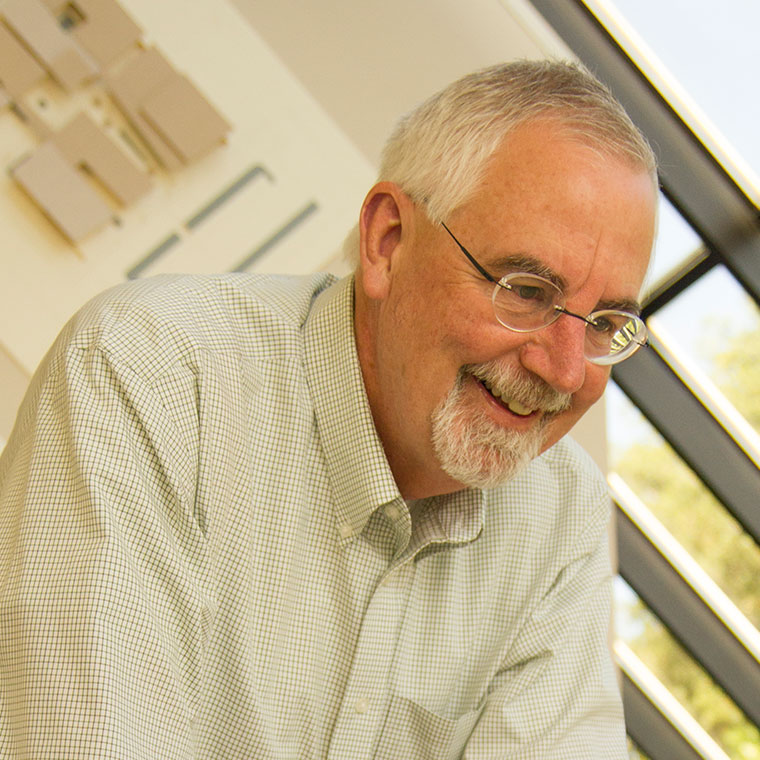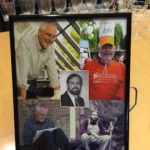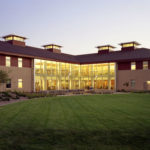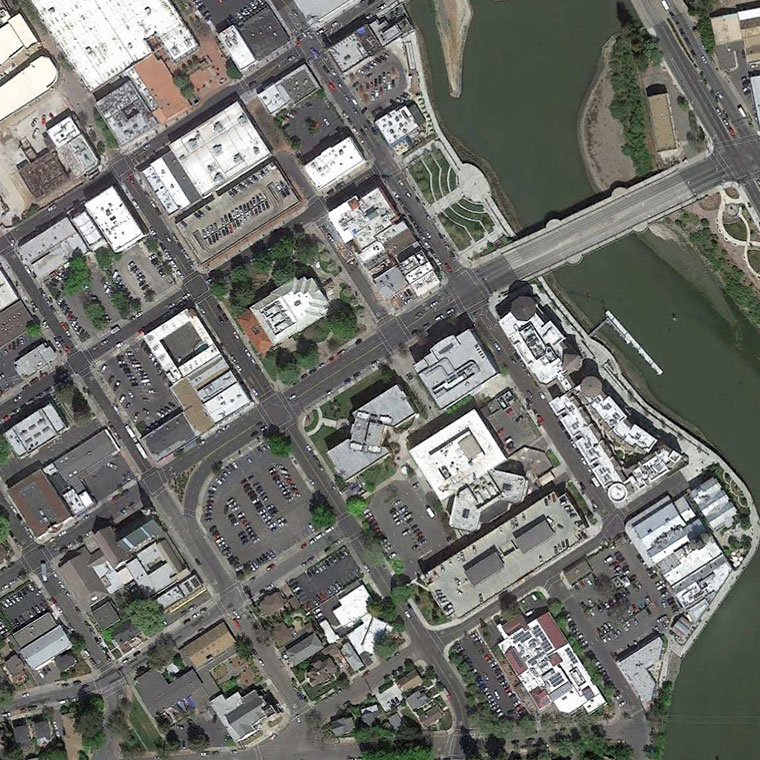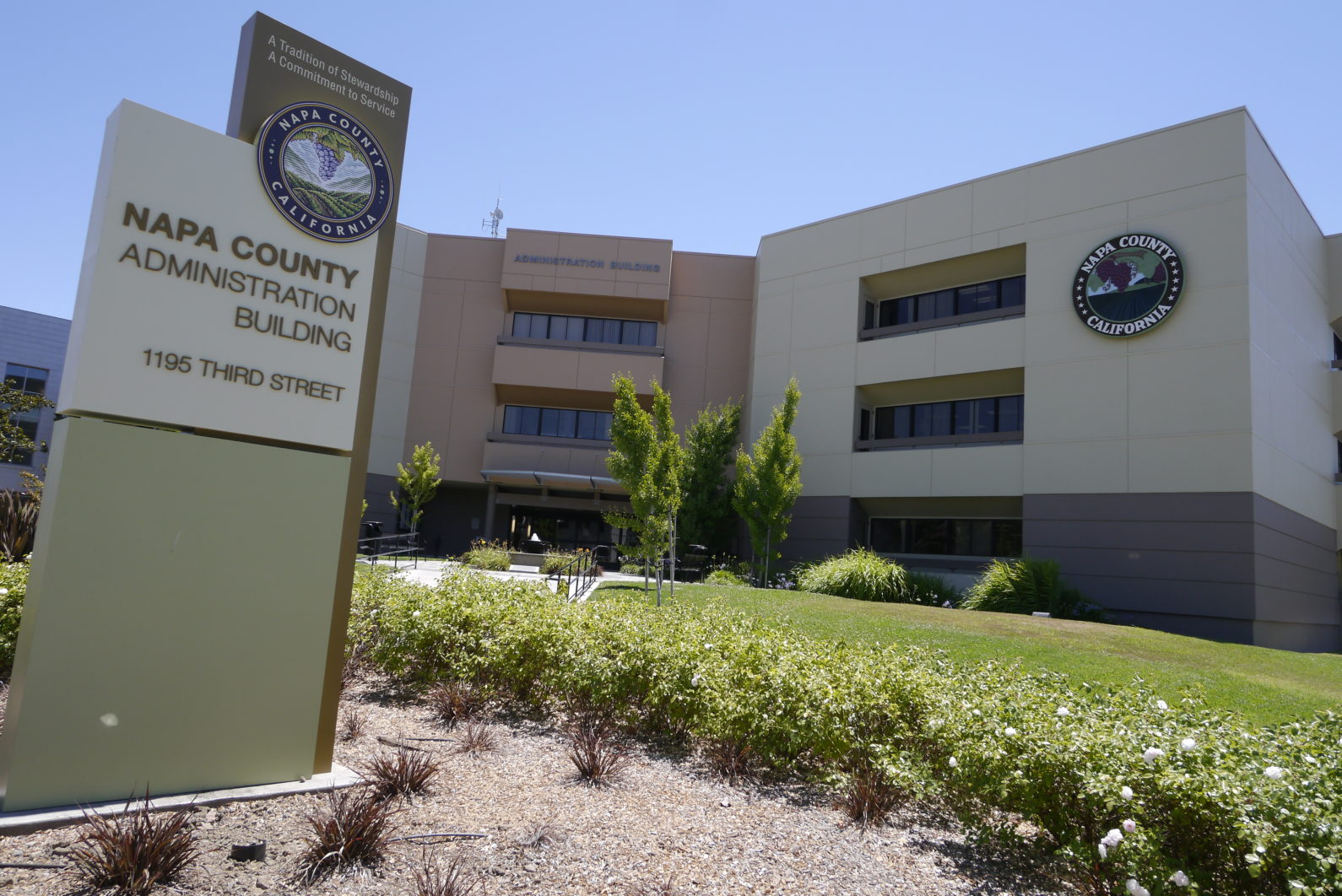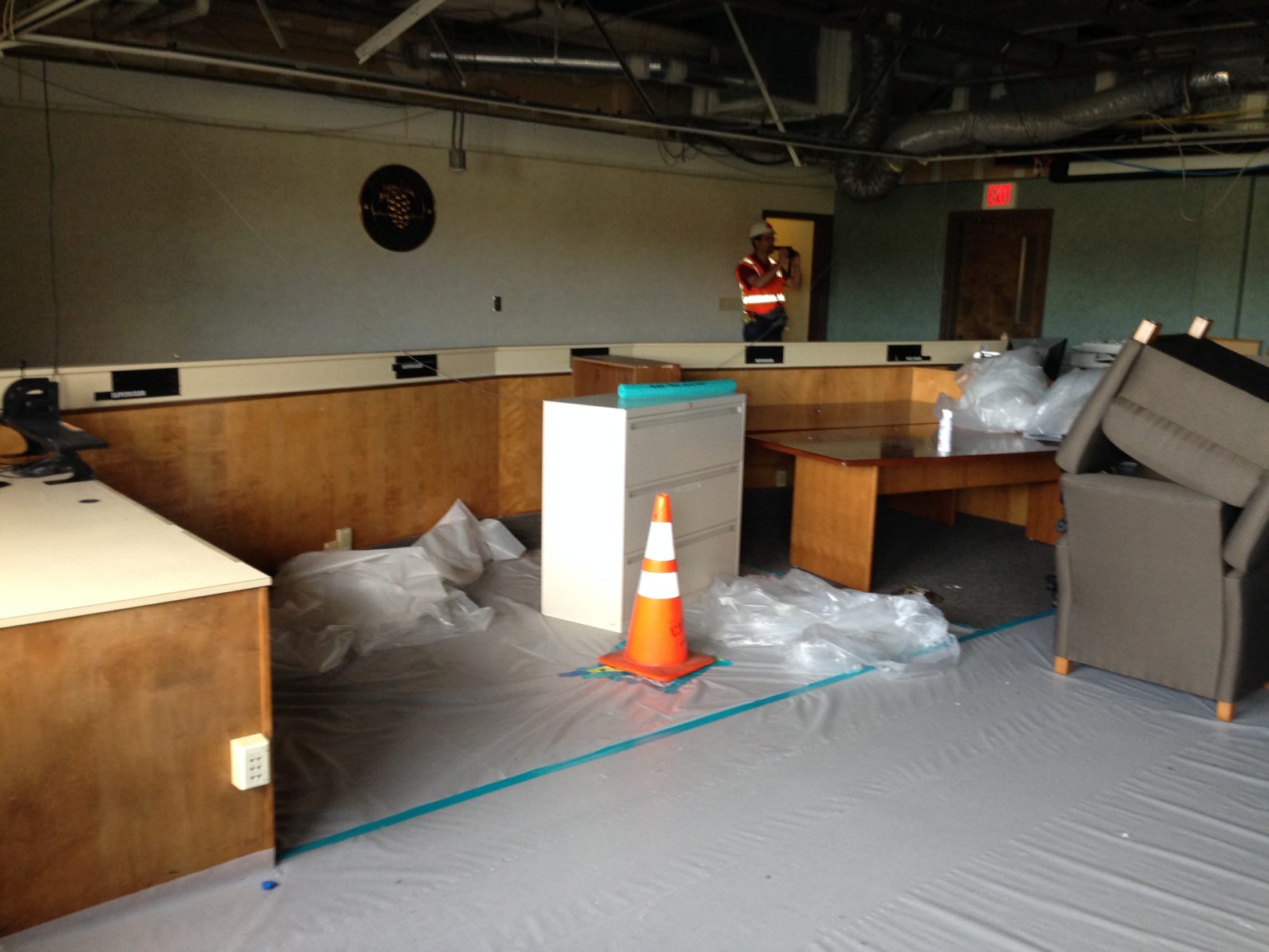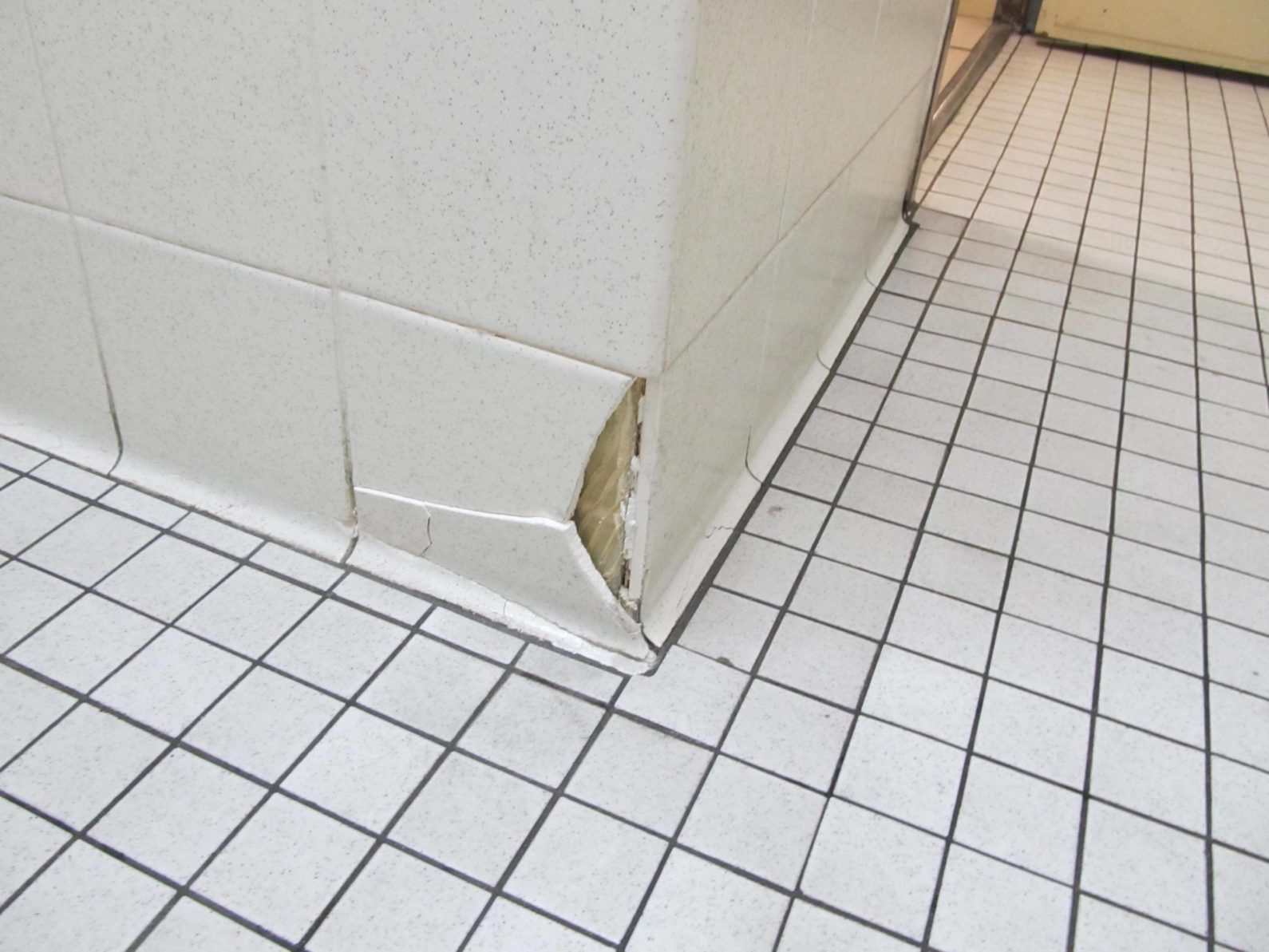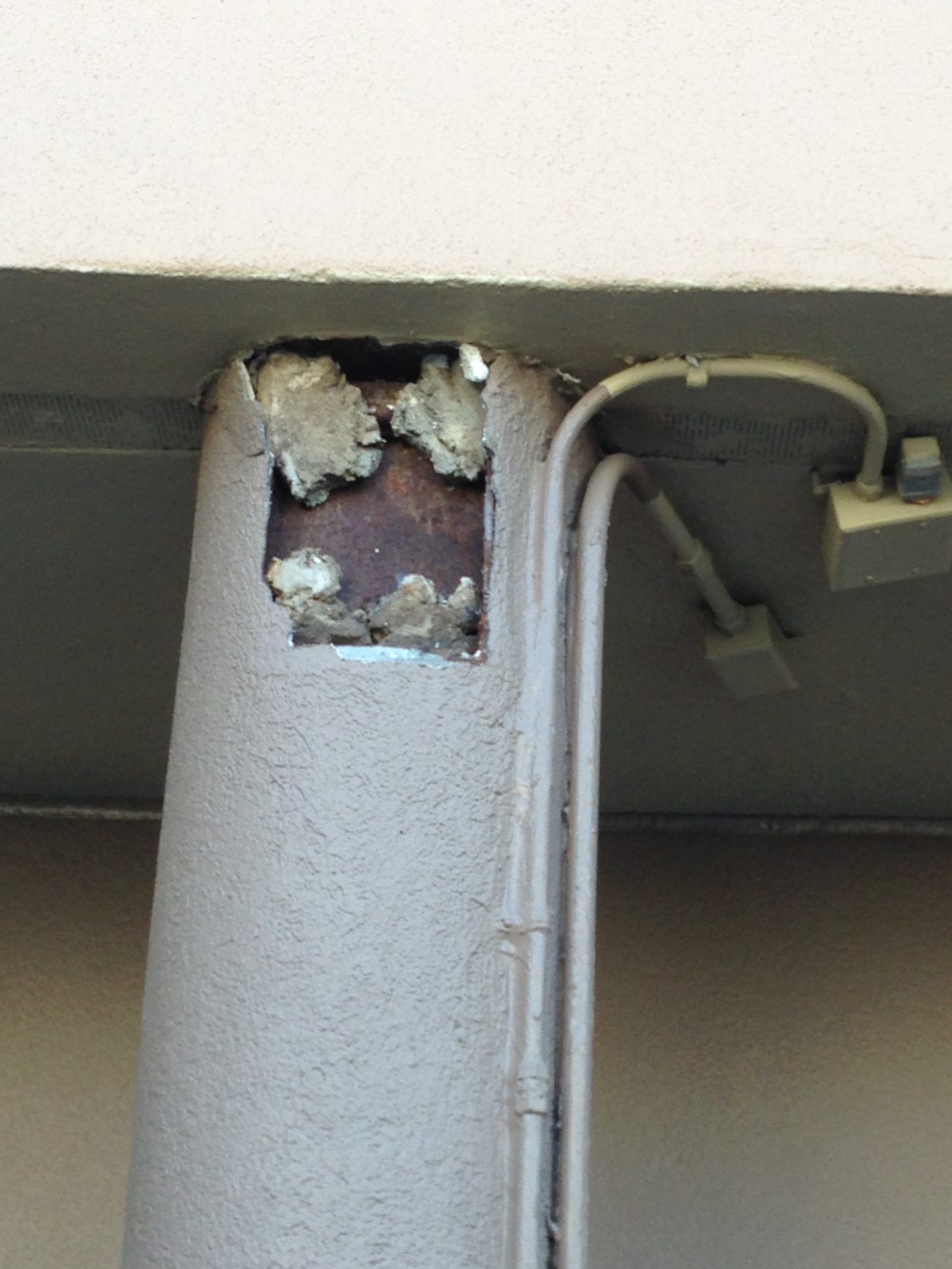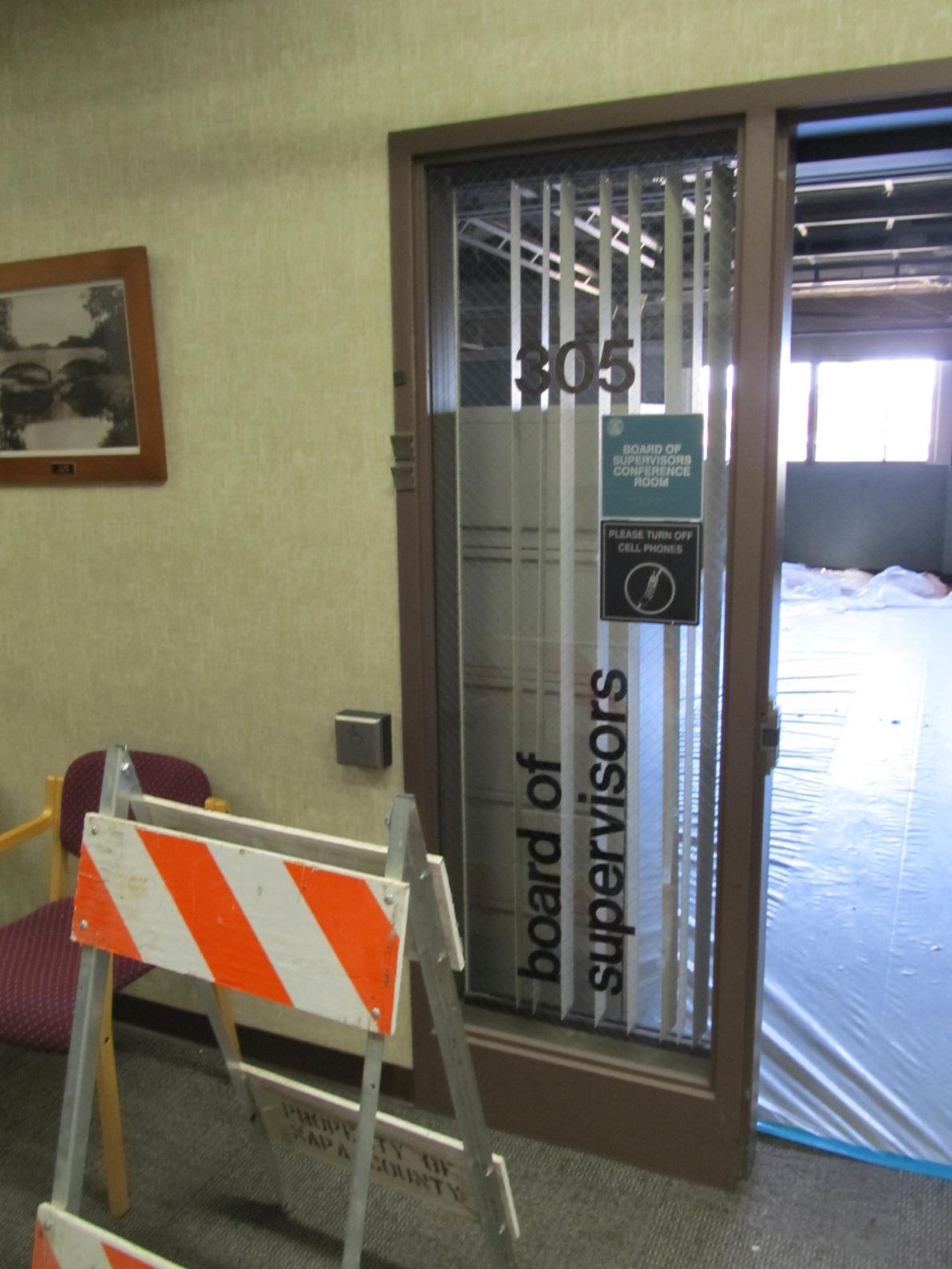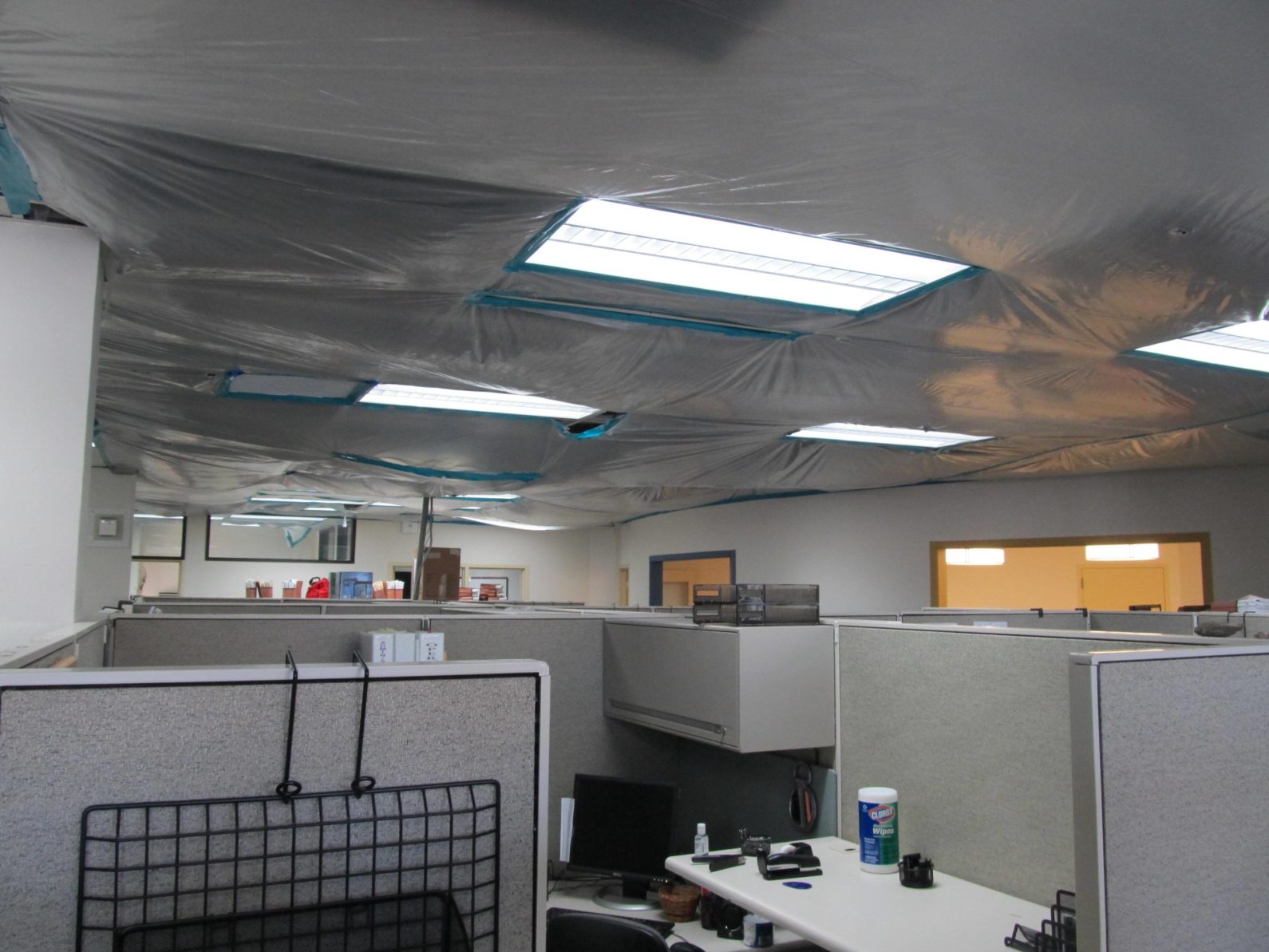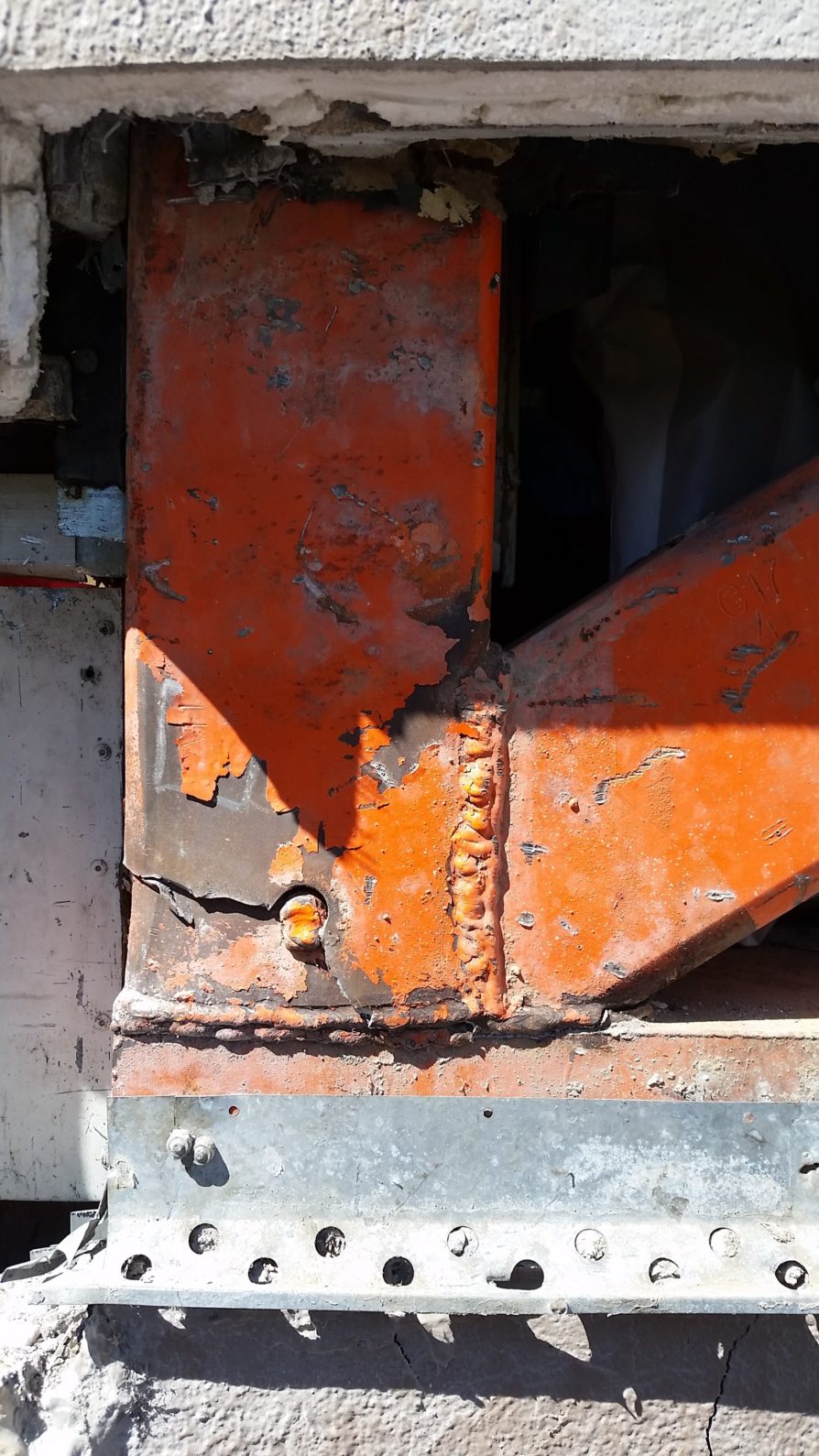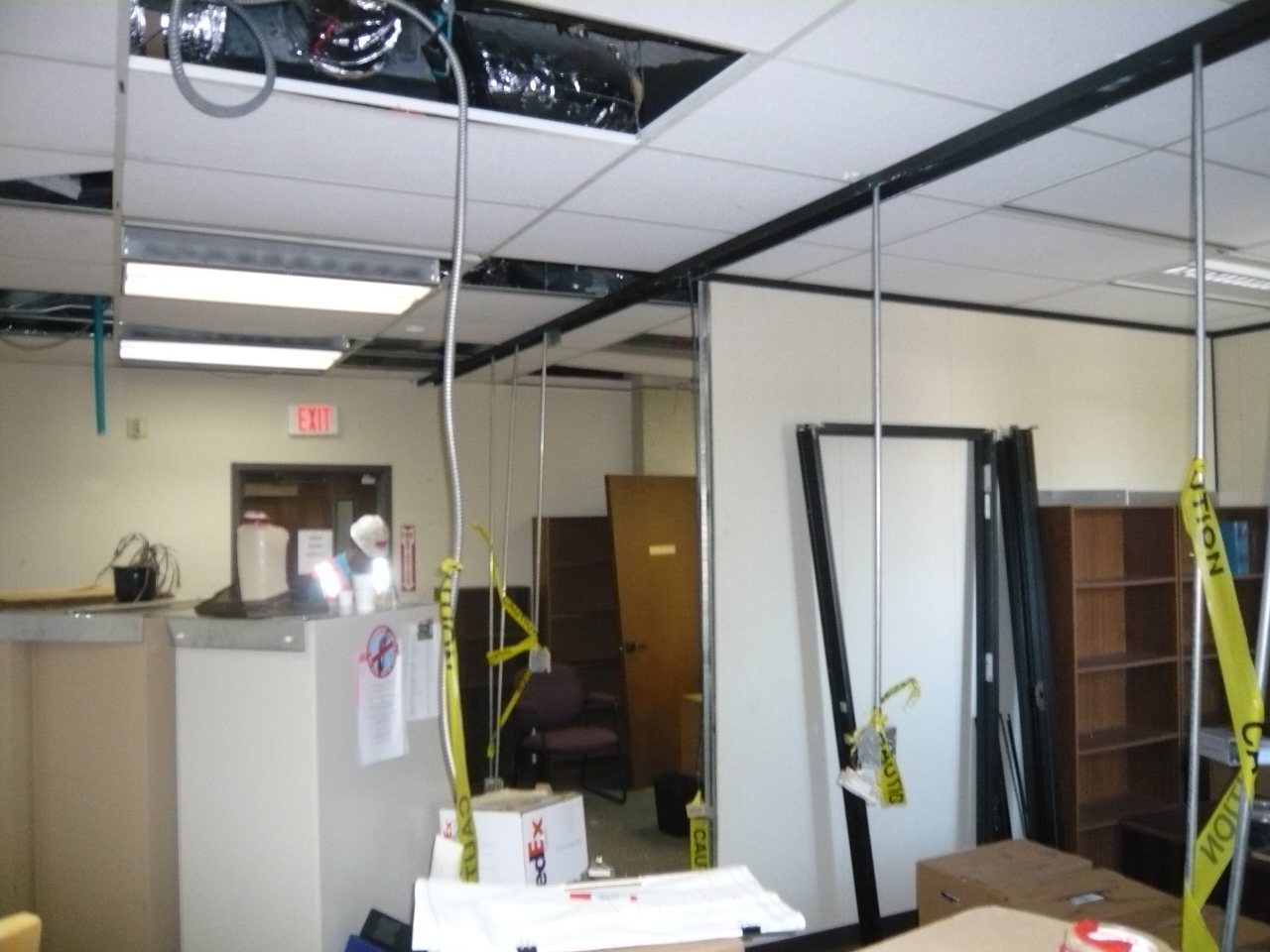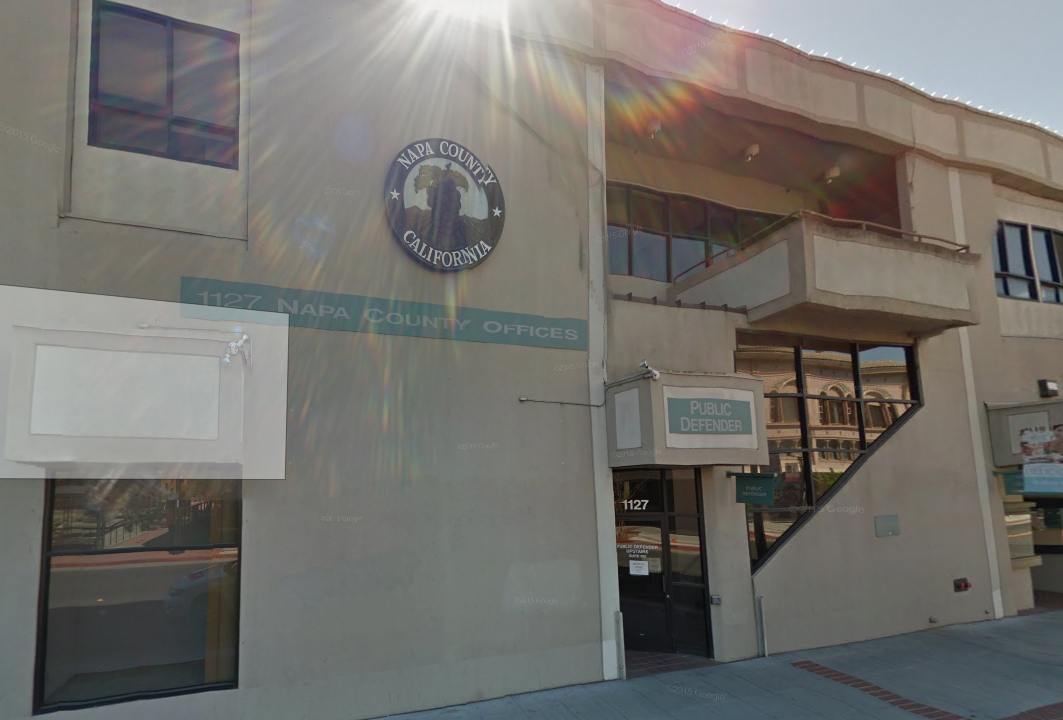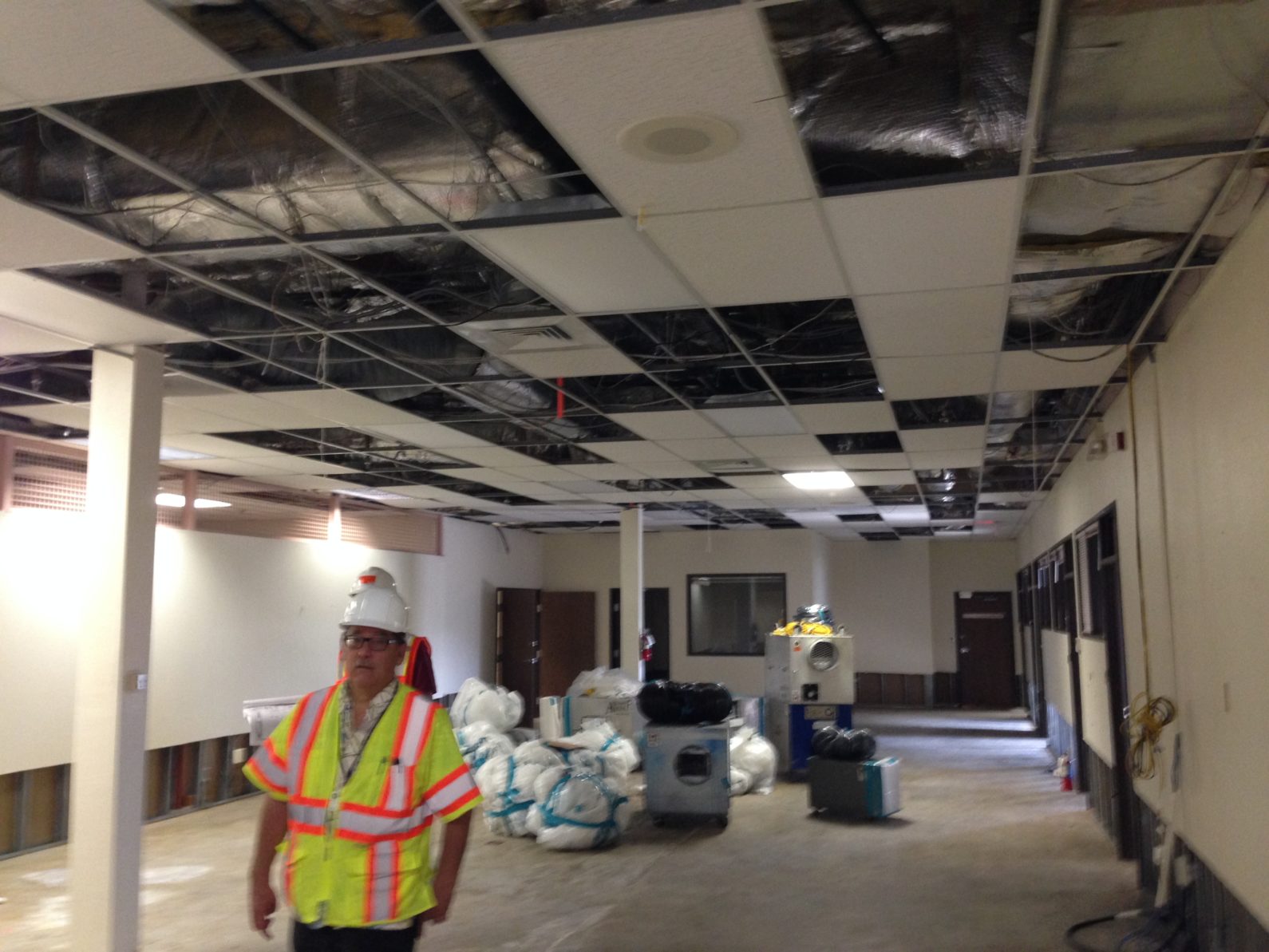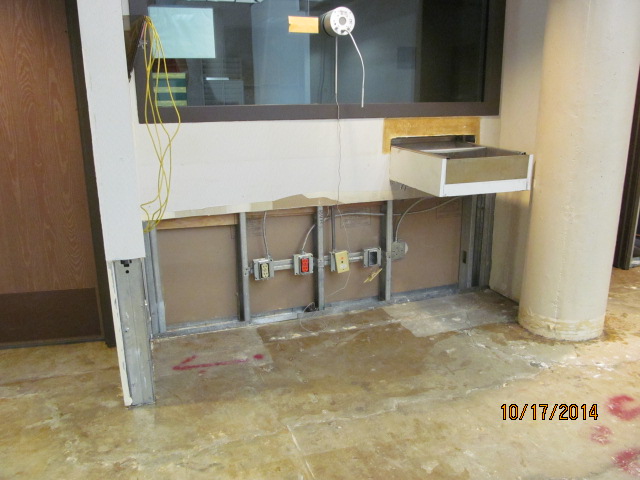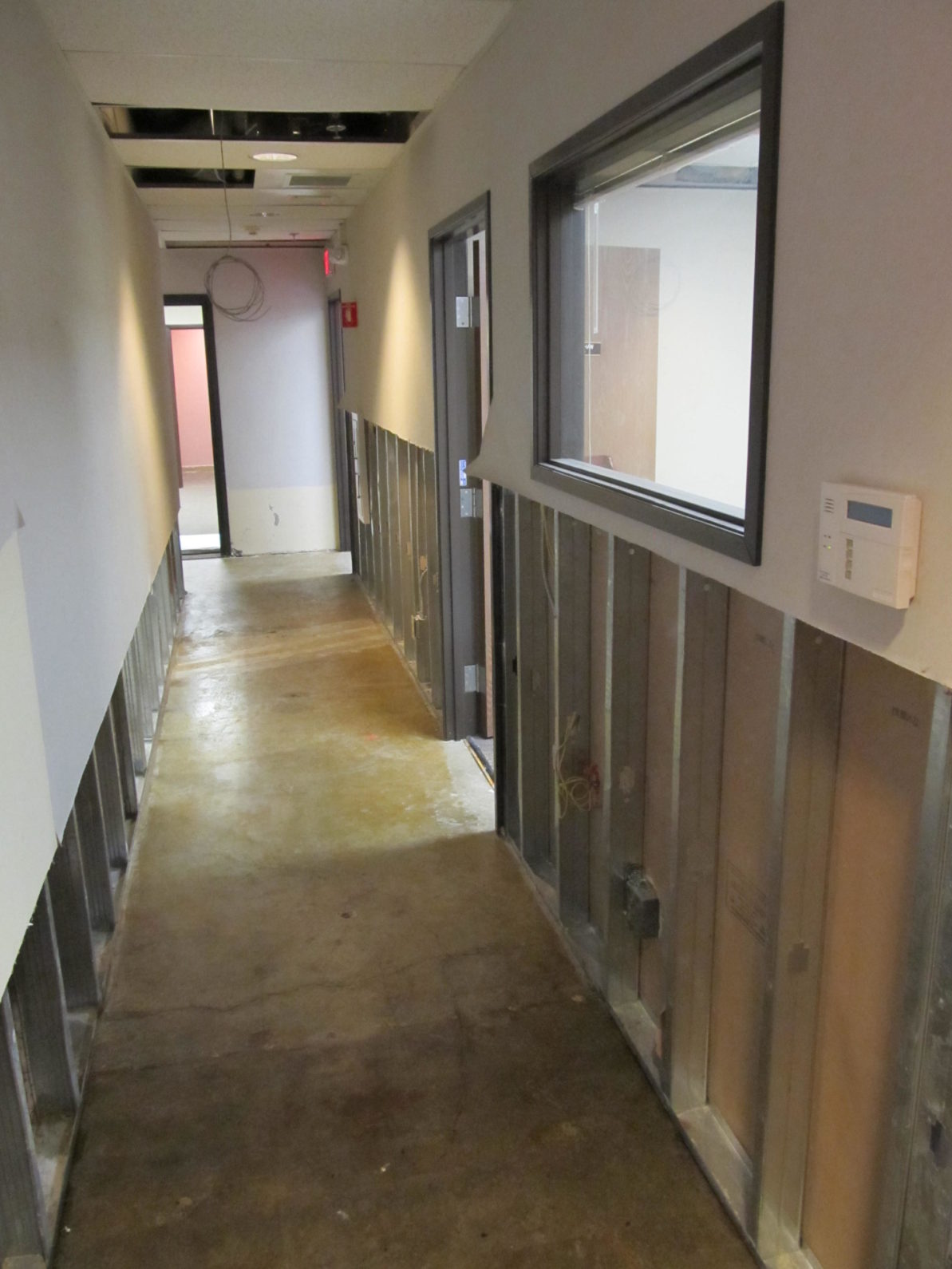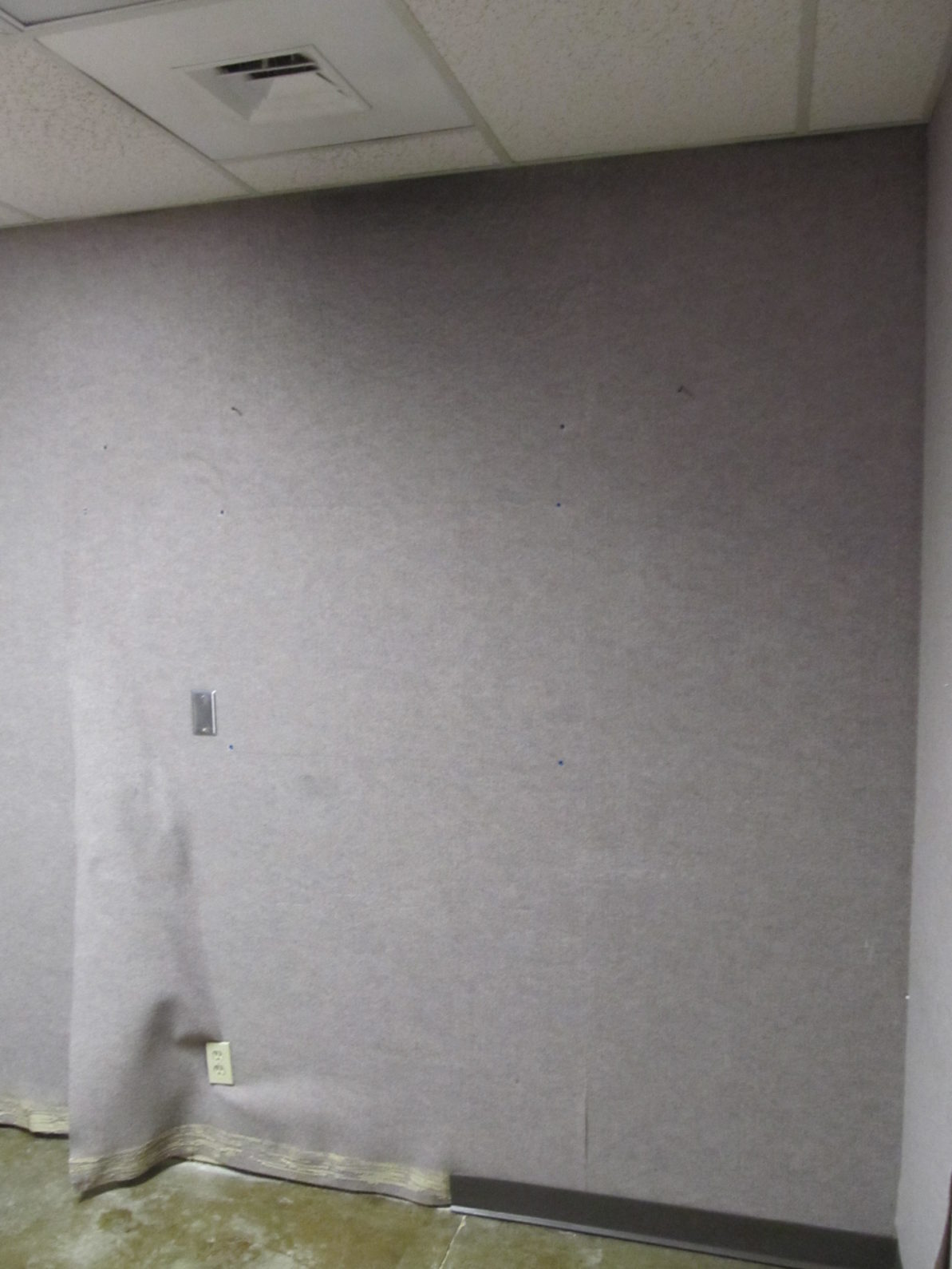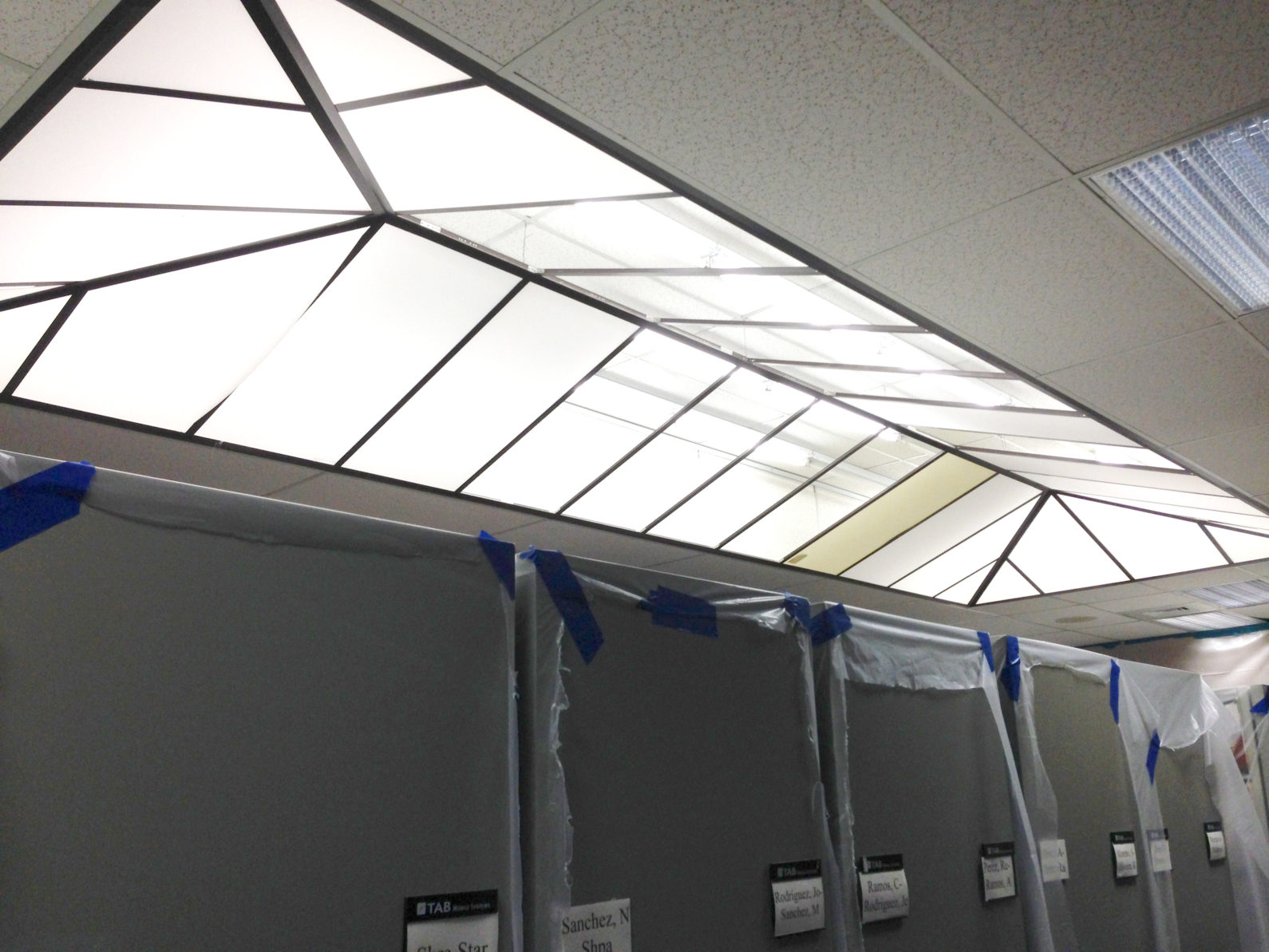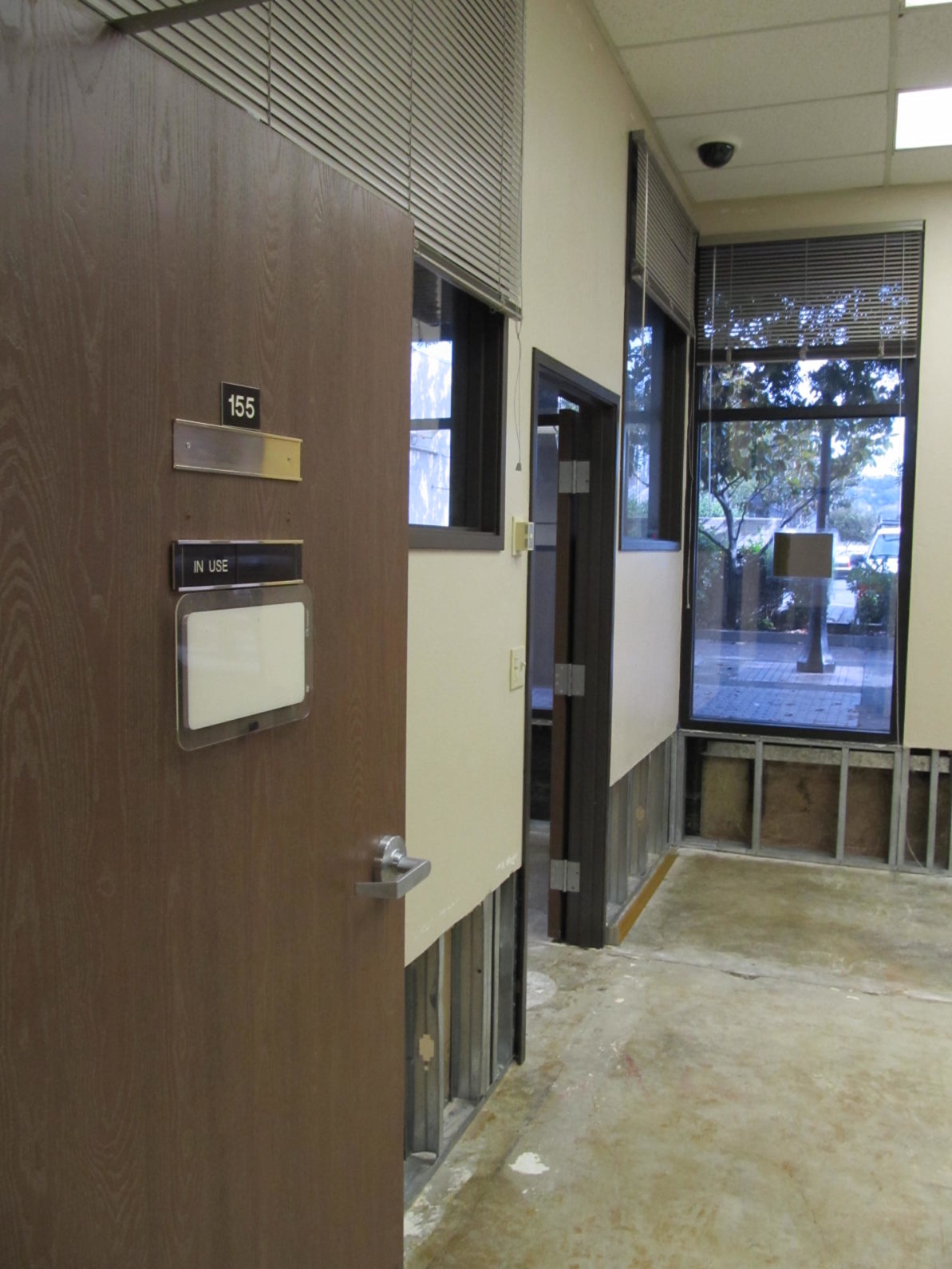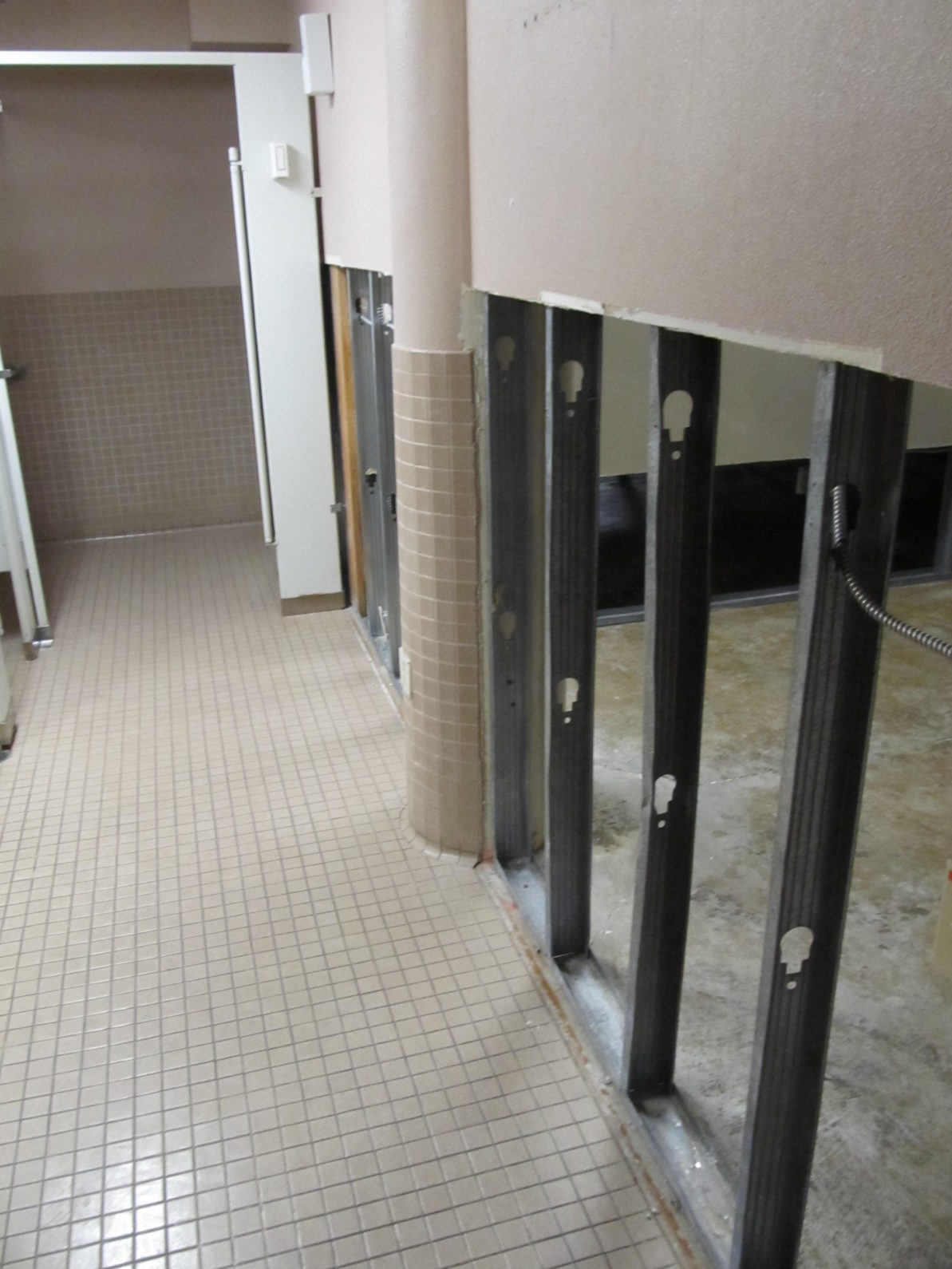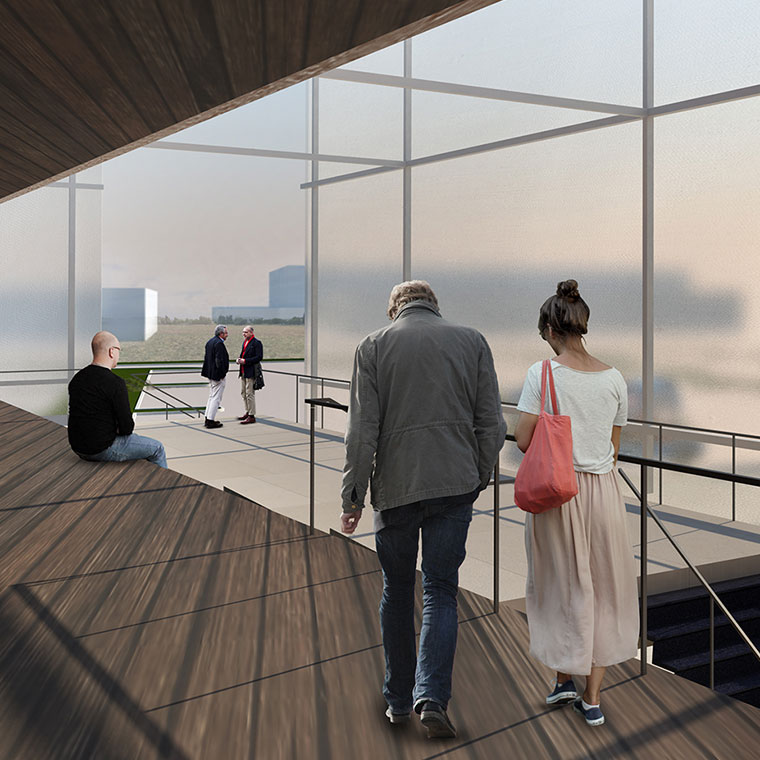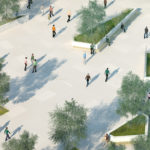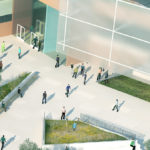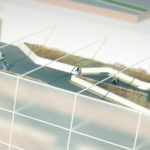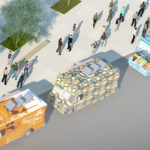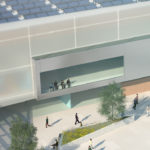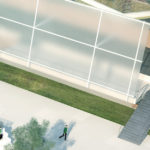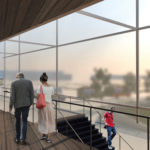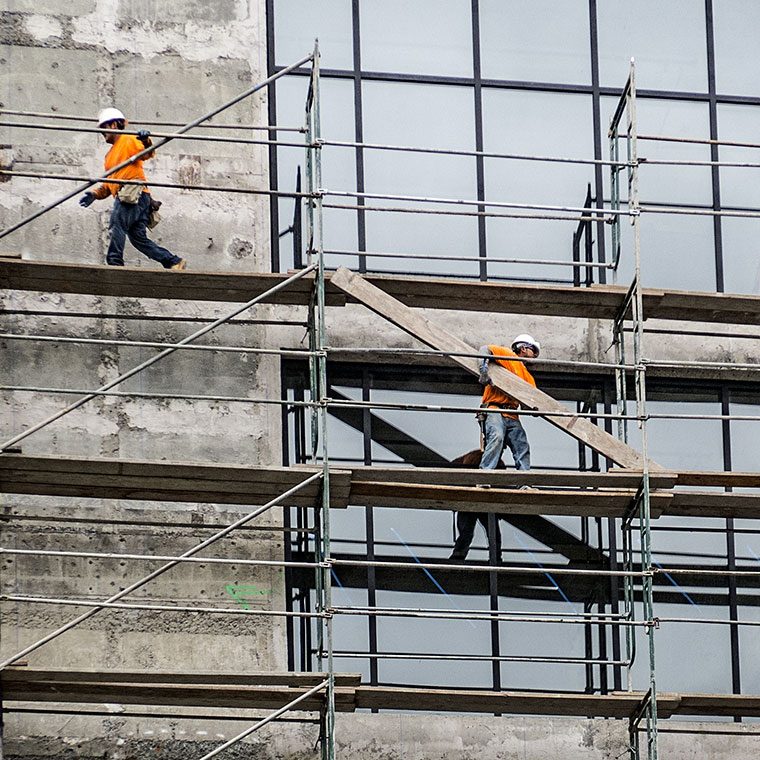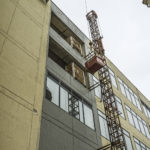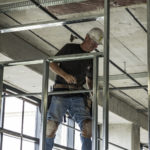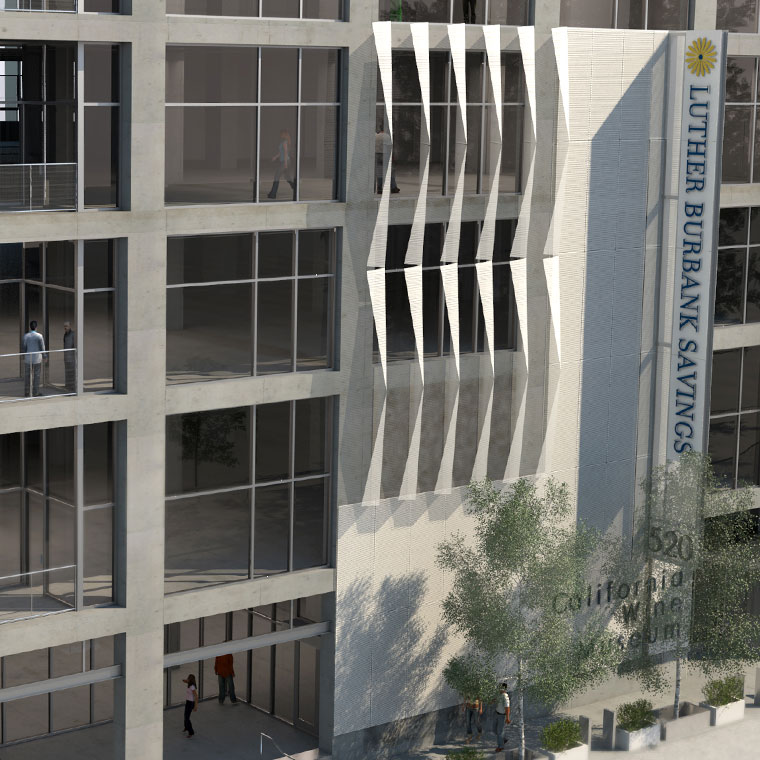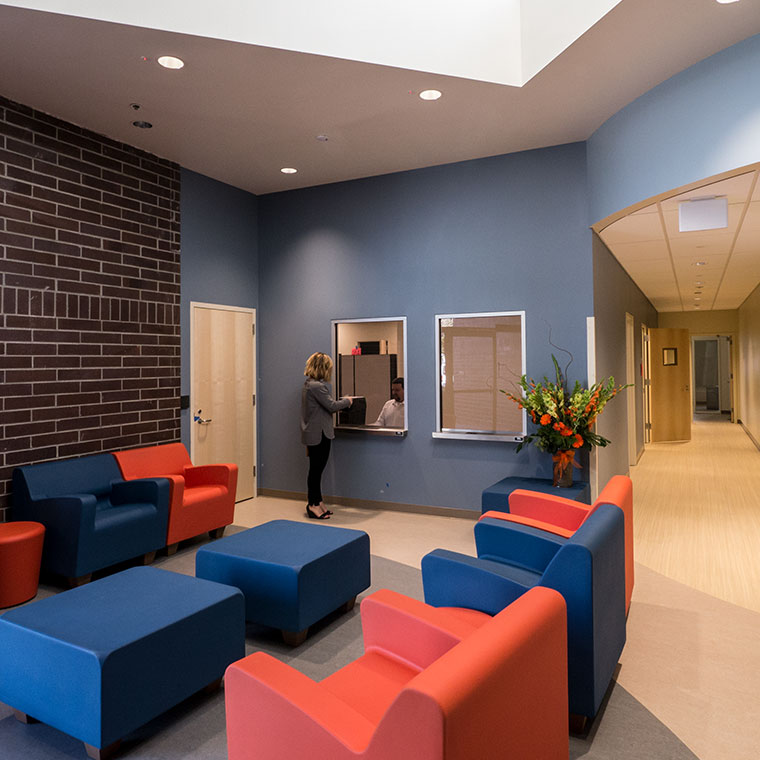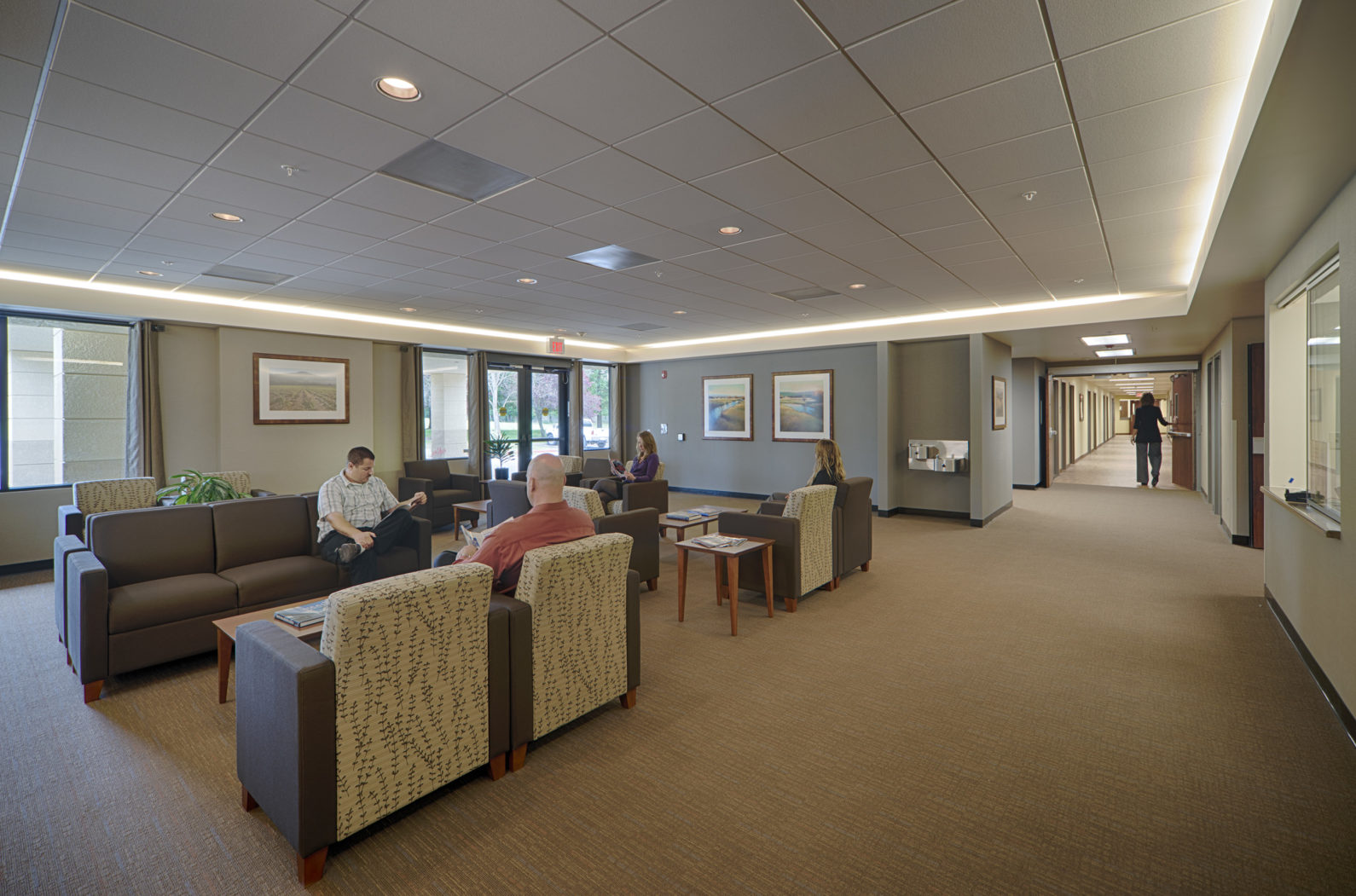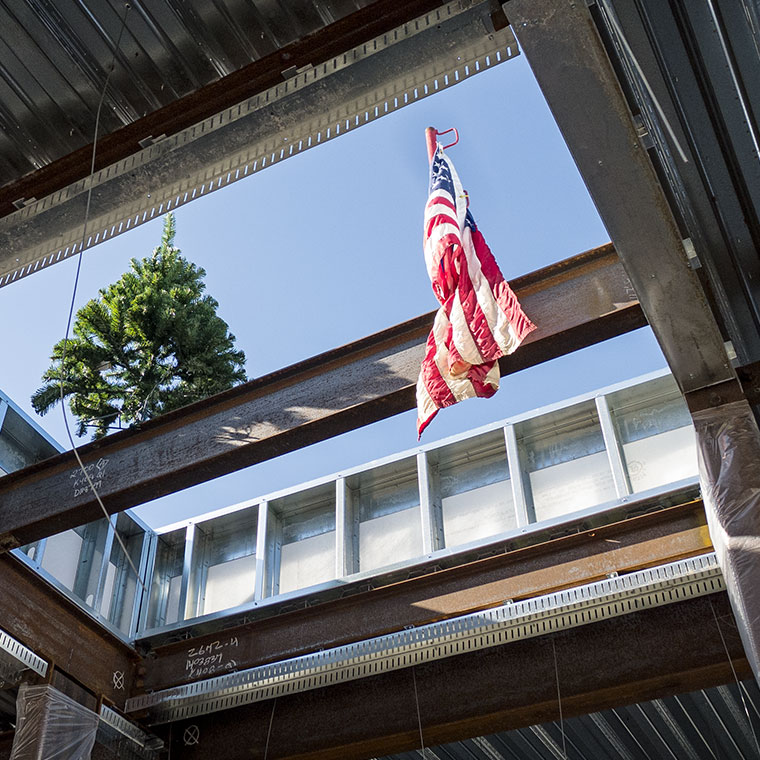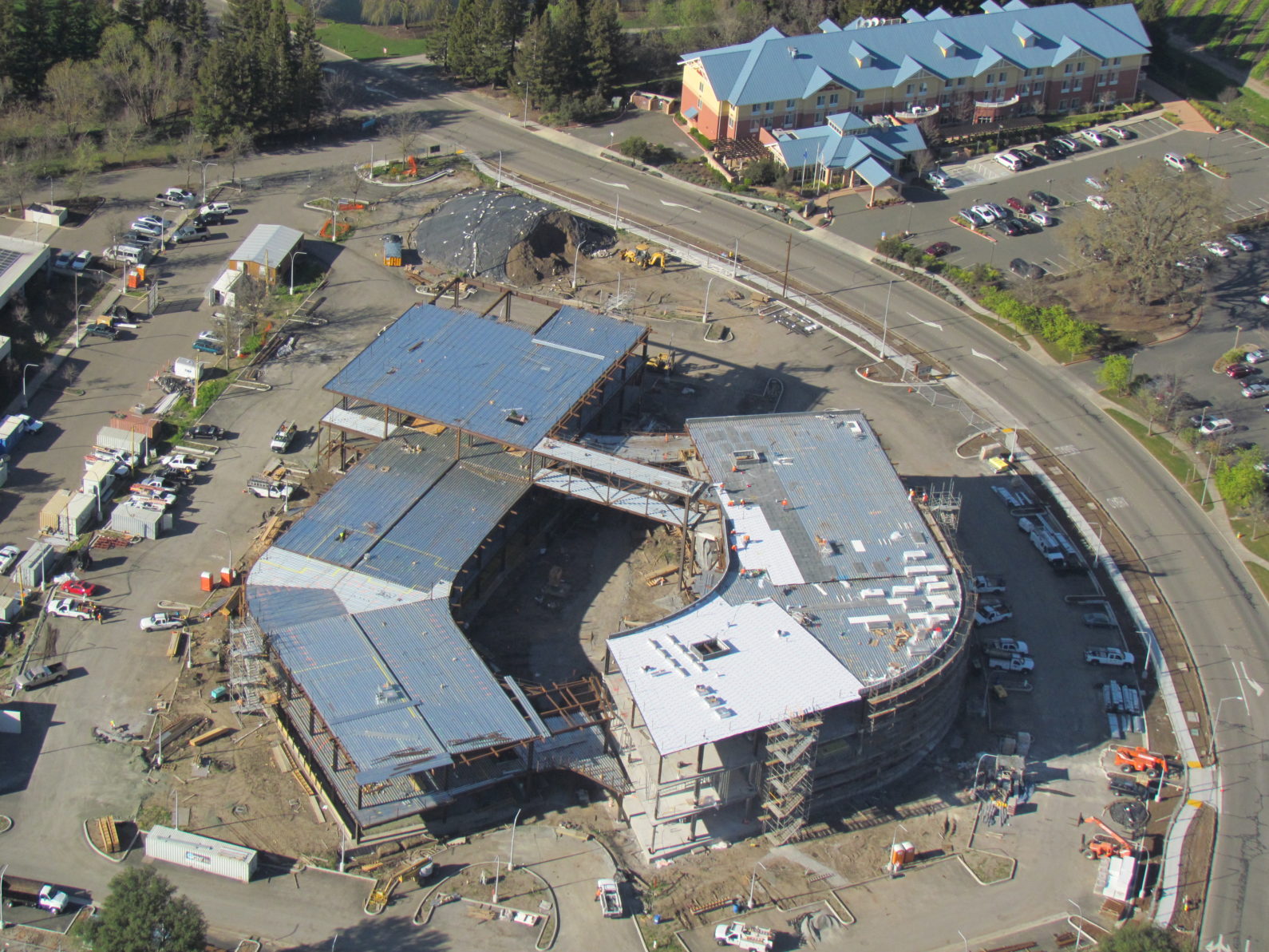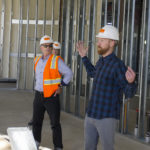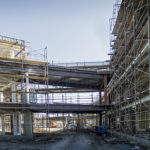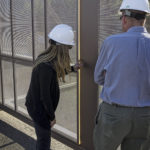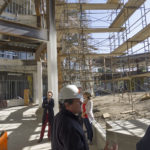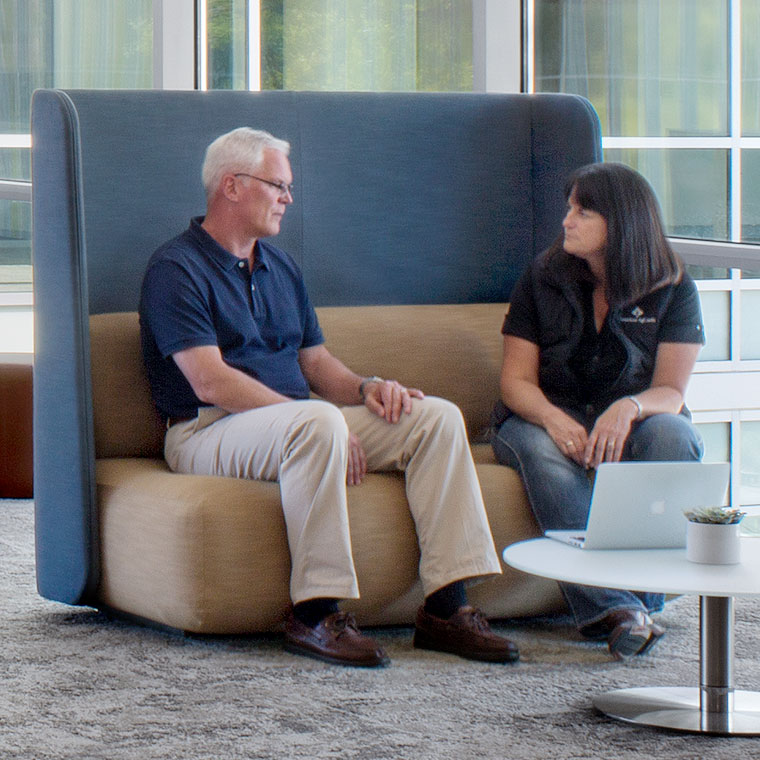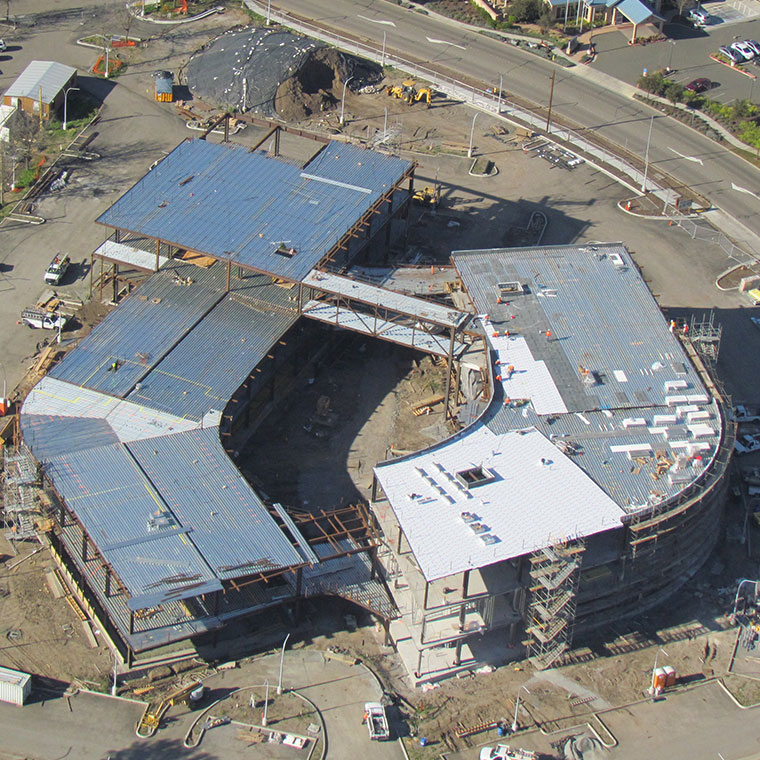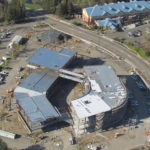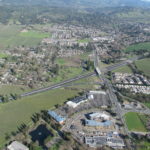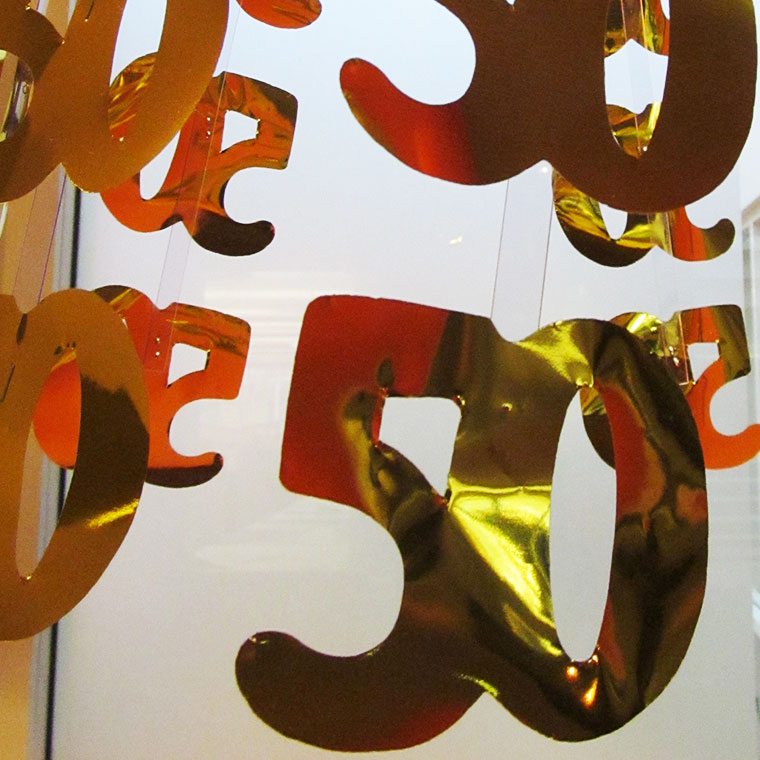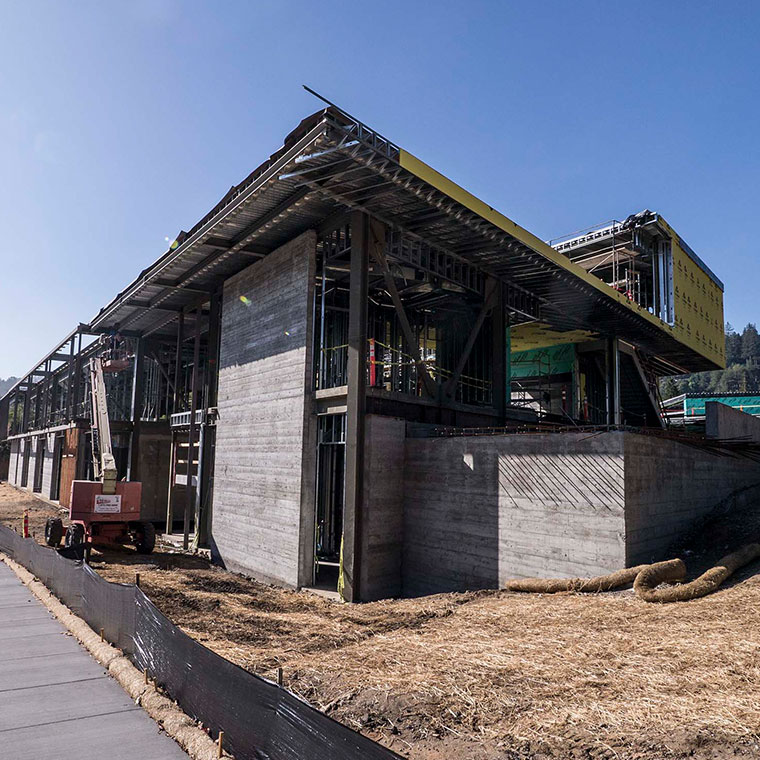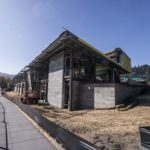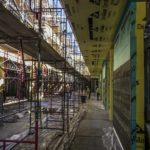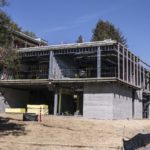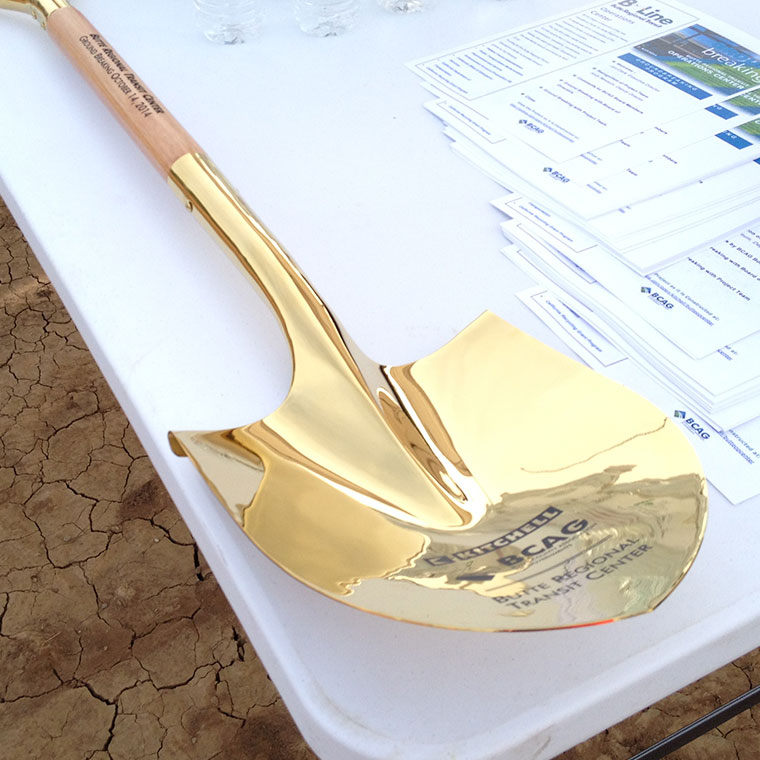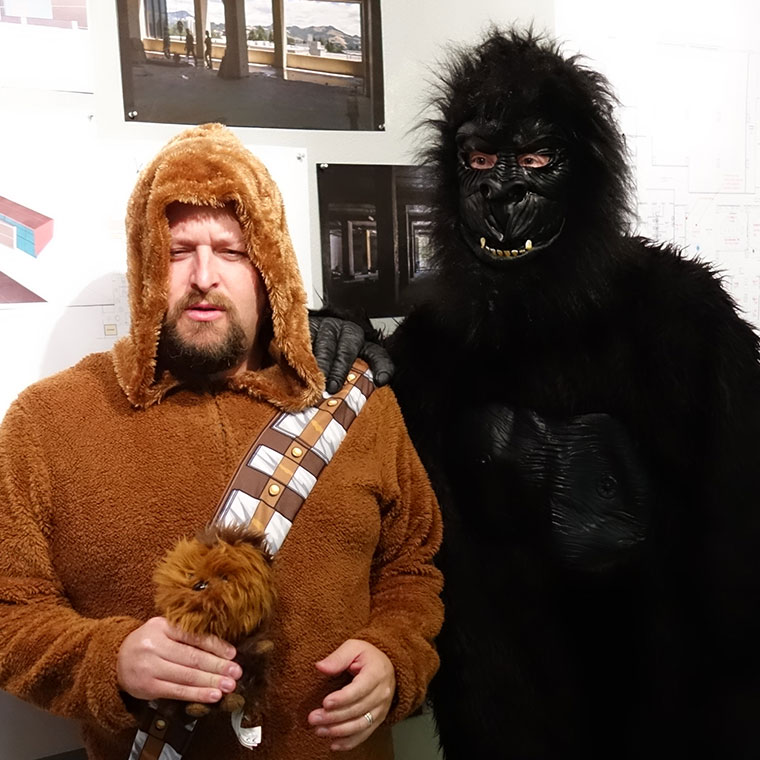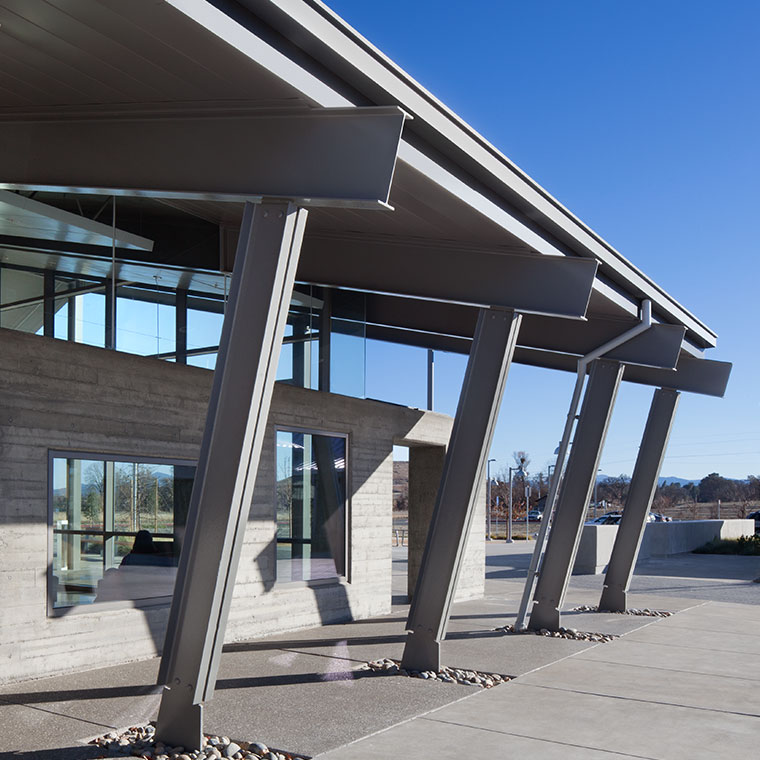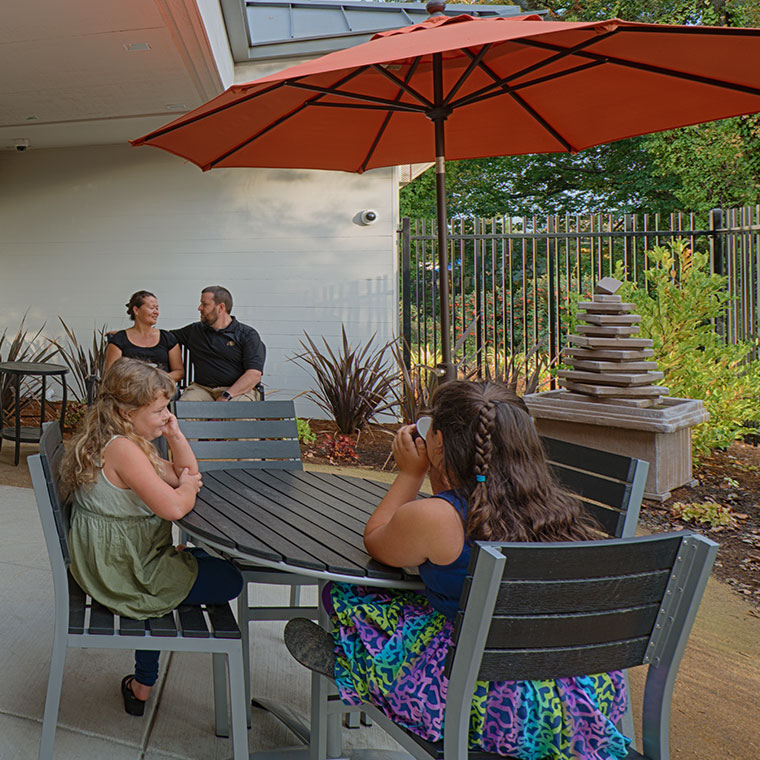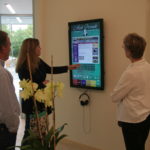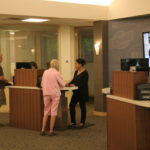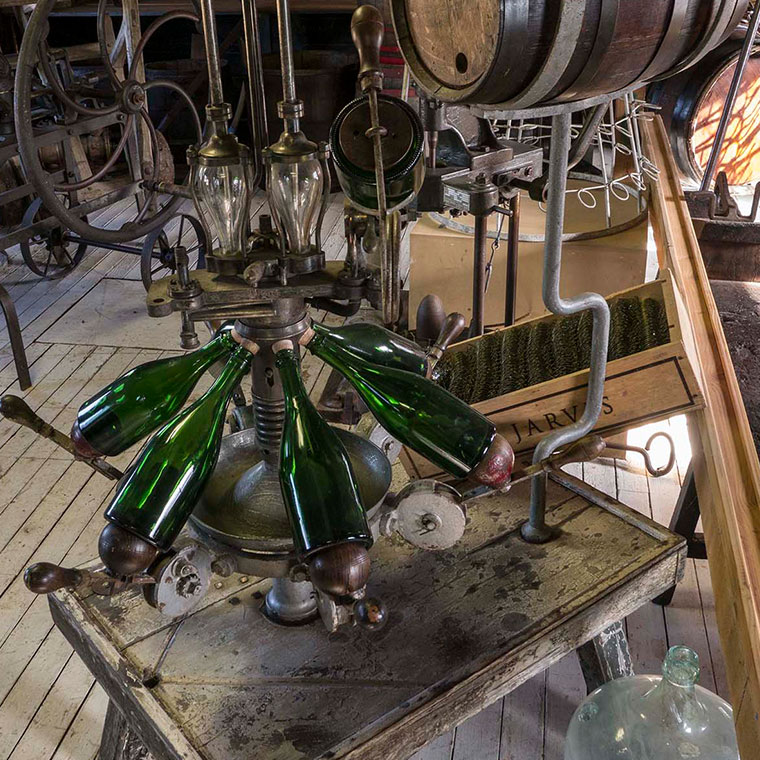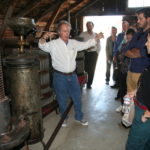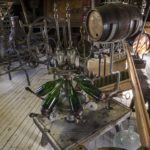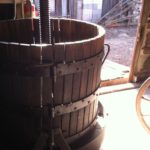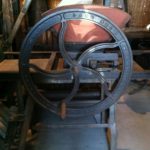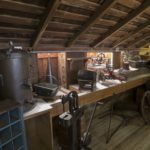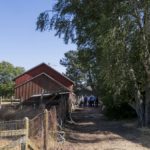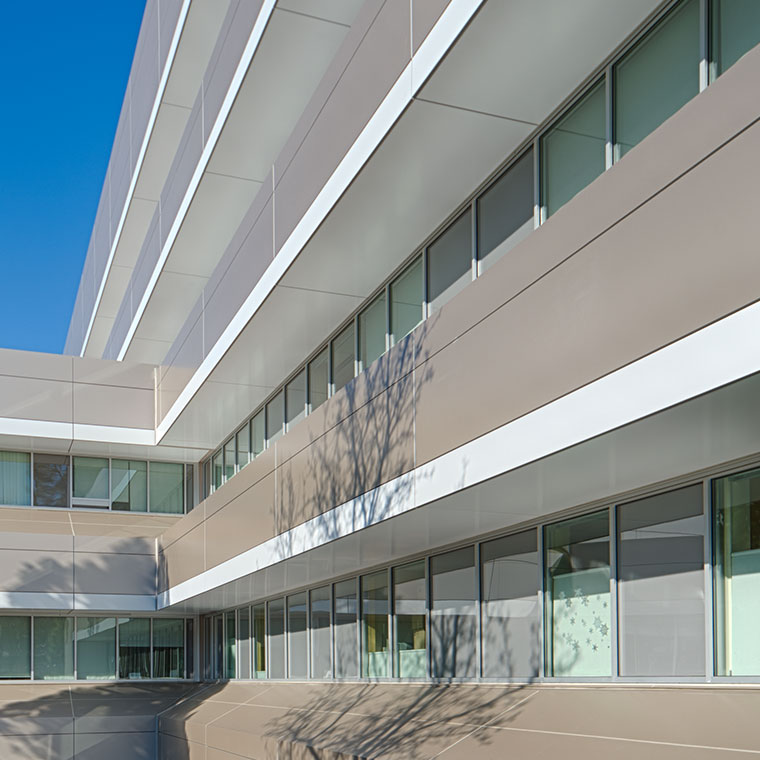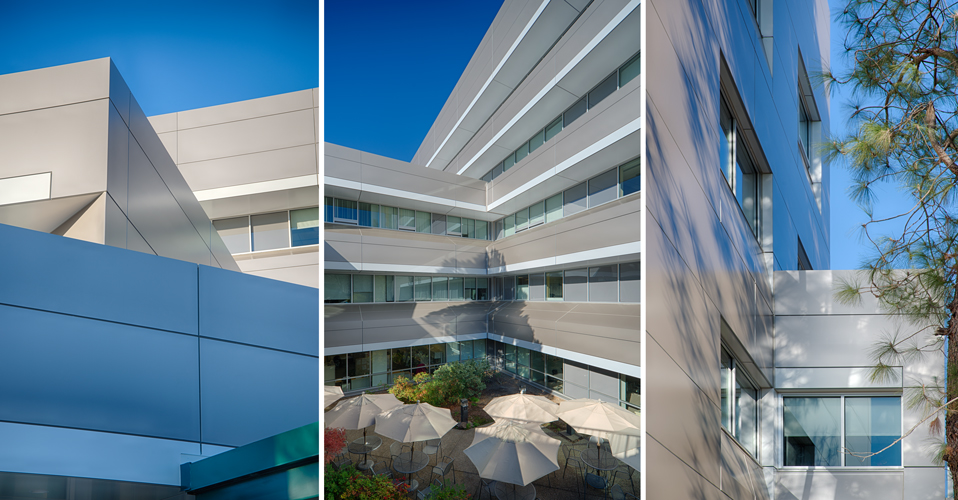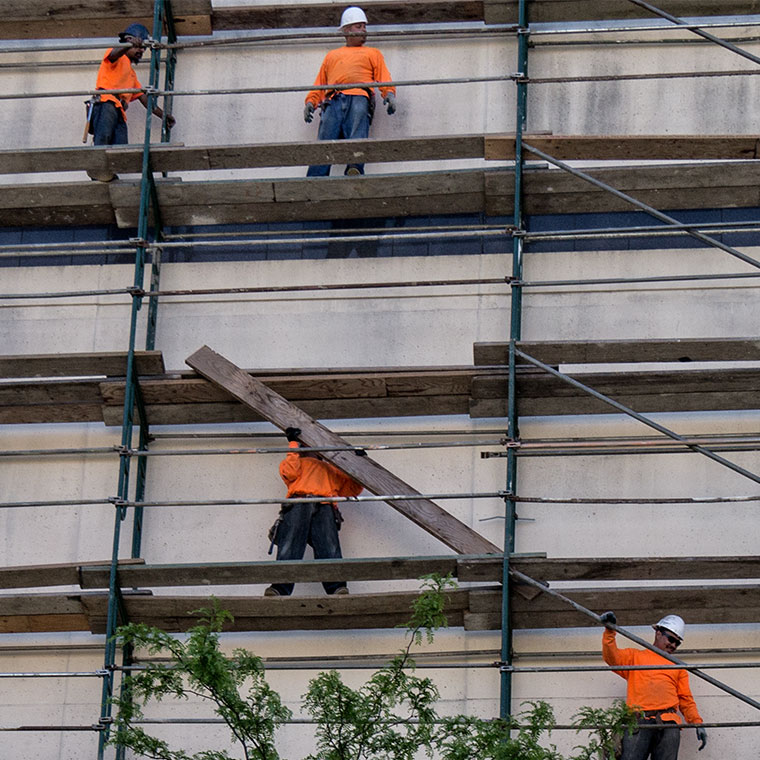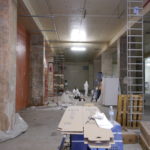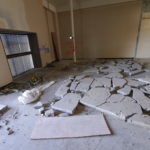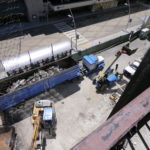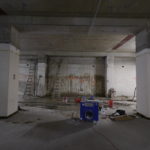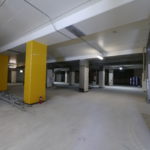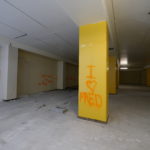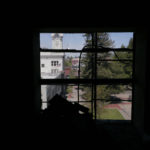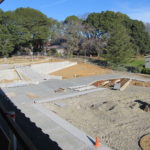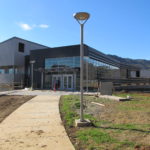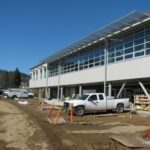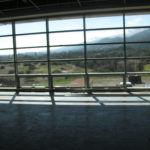Category: Work
Santa Rosa’s Evolving City Center

Santa Rosa’s city center has long been known as Courthouse Square and it carries a long, rich history. Originally laid out as a plaza in the early 1800’s, it later became the site of a grand County Courthouse. The Square was a lively center of community and political activity and a place where young and old gathered. The 1906 earthquake destroyed the Courthouse and a new one was built on the same site as part of the reconstruction efforts.
By the 1960’s county government had outgrown the Courthouse and it was razed. In the midst of urban renewal, the Square was divided into two parts by varying interests and Mendocino Avenue was routed through the middle.  Several decades and many City Councils later, the City of Santa Rosa is moving forward with the Reunification of Courthouse Square. This plan reunifies the Square and creates an urban park and gathering space for residents and visitors alike. With proximity to great dining, shopping and events like the Wednesday Night Farmers Market, it will also serve as an economic boon to local businesses.
Several decades and many City Councils later, the City of Santa Rosa is moving forward with the Reunification of Courthouse Square. This plan reunifies the Square and creates an urban park and gathering space for residents and visitors alike. With proximity to great dining, shopping and events like the Wednesday Night Farmers Market, it will also serve as an economic boon to local businesses.
TLCD Architecture has been a downtown Santa Rosa business for over 50 years and the architect on many key public projects. In February 2016, the firm moved to our new office at 520 Third Street, which fronts Courthouse Square. The building, a former telephone switching facility, had been abandoned for decades. TLCD’s team recognized the potential to transform it into a contemporary building with urban office space and retail opportunities. Working as part of the development team, this building was designed with the reunification of Courthouse Square in mind as a way to reinvigorate the city center.
Recognized for our role in the revitalization of downtown Santa Rosa, as well as other community projects, the Santa Rosa Chamber of Commerce recently named TLCD Architecture Small Business of the Year. Principal Don Tomasi, accepted the award and spoke to our firm’s commitment and work culture.
Furthering this exciting momentum are key infrastructure projects including the SMART Train, which is set to begin passenger rail service in late 2016. With stations that include the Sonoma County Airport (also in active expansion mode) and Railroad Square, there will be non-vehicular transportation directly to downtown Santa Rosa. This connectivity will bring a new level of energy and activity to the city center… aka Courthouse Square!
 To learn about the City of Santa Rosa’s vision, see the Downtown Station Area Specific Plan.
To learn about the City of Santa Rosa’s vision, see the Downtown Station Area Specific Plan.
For more about the history of Courthouse Square, read Gaye LeBaron’s article: Old Courthouse Square has divided Santa Rosa for 160 years.
Pharmacy of the Future – Less Confusion, More Accuracy
TLCD’s Healthcare Studio team recently had the opportunity to design a pharmacy space that incorporates a new technology called GSL Solutions Will-Call Intellicab System. This technology aims to create less confusion and room for error when you pick up your medicine.
Who first thought up those alphabetical bins at the pharmacy stuffed with little white prescription bags? Even when they have 2 “S” bins and the curious “P/Q” bin, it always seems that half the lettered bins are overflowing, the others suspiciously empty. The pharmacist shuffles though the piles only to find your prescription isn’t in the bin at all. They talk it over with their mystified colleagues. “Why don’t you give us ten minutes to figure it out?” they say.

That was the past. The next time you get your prescription filled it may start out on a conveyor belt. In this layout below, a Pharmacist sees your order and picks it out of inventory, just like they used to. From there it is placed in a plastic bin and then onto a conveyor belt. After that it heads to a second station where another Pharmacist confirms the order and requests a slot for the patient in the Intellicab. The Intellicab randomly assigns one of its drawers and a blinking light flashes. The pharmacist heads over, waves their ID and a drawer opens. A blinking slot appears and the Pharmacist inserts the order into the bay. If a pharmacist inserts the item into an adjacent bay the Intellicab will make a record of the event to help train the user.

When the patient shows up to collect a prescription, their personal data is entered, and once confirmed the bin with their order in it is identified. A light appears on the drawer that holds it, then the Pharmacist heads over, waves their ID card to let the Intellicab know which Pharmacist is making the request. The drawer opens and a light appears at the patient’s randomly assigned bin. The pharmacist would then check the name on the bag and complete the transaction.
Even more important than speeding up pharmacy lines at busy hospitals, this technology has the power to save lives. Taking the wrong medication can have deadly side effects and, while rare, the wrong medication is delivered to patients from time to time. No system is fool-proof from human error, but this technologically advanced pharmacy design will provide a faster and safer way to get medication.
If you’d like to read more about TLCD’s Healthcare Studio, check out some of our other projects here.
TLCD Architecture’s Chair Parade Signals Move to New Office
 Friday brought cloudy skies and rain, but it certainly didn’t dampen spirits as TLCD Architecture moved to our new office just two blocks down Santa Rosa Avenue. Why have movers pack up your chairs, when you can roll them over – umbrellas and all! This symbolic move signifies a nearly decade-long process to renovate an abandoned building in downtown Santa Rosa and turn it into a vibrant, mixed-use project. The Press Democrat captured the essence of this move in this article that appeared over the weekend “Tenants Move Into New Office in Santa Rosa’s Former AT&T Building”.
Friday brought cloudy skies and rain, but it certainly didn’t dampen spirits as TLCD Architecture moved to our new office just two blocks down Santa Rosa Avenue. Why have movers pack up your chairs, when you can roll them over – umbrellas and all! This symbolic move signifies a nearly decade-long process to renovate an abandoned building in downtown Santa Rosa and turn it into a vibrant, mixed-use project. The Press Democrat captured the essence of this move in this article that appeared over the weekend “Tenants Move Into New Office in Santa Rosa’s Former AT&T Building”.
The exterior transformation of the building is very apparent, but the space inside is simply amazing. With 16′ high ceilings, raw concrete walls, and sleek lines, the office feels urban and very hip. As architects, designing your own office space comes with no shortage of ideas for work environment, furniture and finishes. We’ll post more about our new office design in coming weeks… but for today, it feels great to settle in and begin work in our new digs!
Monolithic Desk Installed at American AgCredit Headquarters
As the TLCD Architecture designed American AgCredit Headquarters project nears completion, one of the most exciting details of the project is being installed – the main reception desk. Set in front of a rammed earth wall, this dramatic, 27-foot long monolithic white desk stands in striking contrast to the earthen wall behind it. The desk is manufactured in modules by Isomi in England, and is being installed by a crew from Connecticut. The crew glues the modules together, which are pulled tight by means of a motorized clamping system. The seams are filled and sanded, and the resulting monolithic structure is quite simply stunning. LED lighting will be installed at the base of the desk so that it will appear to float above the floor.
Museum on the Square and College of Marin Academic Center Named Top Projects
The North Bay Business Journal held it’s 10th annual Top Projects in the North Bay awards at the Sheraton Petaluma on December 17th. TLCD Architecture was recognized for two projects, the Museum on the Square in the Office Project category, and College of Marin’s new Academic Center in the Higher Education category.
TLCD Architecture teamed with Mark Cavagnero Associates on the Academic Center at College of Marin. The new center opened in August of this year and has become a welcoming space for students, faculty and the community.
Museum on the Square was recognized for it’s role in transforming the urban landscape of downtown Santa Rosa. TLCD envisioned a light-filled contemporary office building and designed both the exterior and it’s own offices on the 2nd floor.
Who’s Up for a Field Trip… to American AgCredit?
Architecture firms are all about field trips… and often they are tours of our projects under construction. This week, TLCD’s staff got out for a tour of the American AgCredit Headquarters project in Santa Rosa. This landmark 120,000 square foot project is nearing completion with portions of the building to be occupied within a few weeks. It was a great opportunity to tour it and see how many of the key features are taking shape. In the photo above, our team is looking at the rammed earth feature wall which was built early in construction. It was encased in a wooden structure for protection, and then the building was constructed around it. The wall is a stunning reference to the soil that makes agriculture possible and supports American AgCredit’s mission of farm lending.
One of many exciting design elements will be perforated zinc exterior cladding, which is only now beginning to be installed. Over the next few months these zinc panels will completely transform the appearance of the building. Not only will they visually define the facade, the panels will also provide sunshading that will significantly reduce the cost of cooling the building.
On the second floor, we walked one of the sky bridges with a feature wall of channel glass. From the outside, the glass provides a distinctive entry element, but from the inside, it creates wonderful, diffused lighting for what will be a casual work area for the employees of American AgCredit. This sky bridge will have soft lighting to one side and clear views to the inner courtyard on the other side.
Throughout the tour we did what most architects do… looked up, looked down, looked all around. These tours are a learning process for the entire staff and also expose us to ideas, materials and solutions we can use on other projects.
College of Marin Celebrates Successful Measure C Bond Projects
College of Marin held a celebration Thursday afternoon to mark the completion of the Measure C Bond Program, and the ribbon-cutting for the newly completed Academic Center, which was designed by the team of TLCD Architecture + Mark Cavagnero Associates. Don Tomasi and Brian Wright represented TLCD Architecture at the event, along with John Fung and Olga Kozachek from Mark Cavagnero’s office.

Situated at the corner of College Avenue and Sir Francis Drake Boulevard, the new Academic Center, provides a welcoming front door to the Kentfield campus. The 43,000 square foot building houses 16 classrooms, a 100-seat lecture hall, 3 computer labs, and offices for the college faculty and administration. The building was designed to be fully integrated with the sloping site, carefully preserving many of the heritage oak and redwood trees, and featuring native and drought-resistant landscaping. The project is pending LEED Gold certification.
The celebration was attended by community members, college faculty, staff, board and administration, contractors, program managers, students, and regional elected officials. The mood was festive, with refreshments and conversations centering on the successful completion of the 10-year building program. The college president, Dr. David Wain Coon, led the formal presentation that also included comments by board members, administrators, students and elected officials.
Game On… Architectural Renderings Go Interactive
Architecture is a complex process that is integrated with massive amounts of information requiring coordination between many parties. We use software specifically developed for this type of information management (BIM), but what’s so interesting is all this information is imbedded in a digital 3D model. We are constantly finding new ways to use and extract this information throughout the design process.
The current hot trend in design visualizations is the integration of virtual reality (VR) rendering into the Revit (BIM) workflow. I’ve had a lot of fun sharing this new type of presentation with clients, staff, friends – even Angel our office dog tried it out using Google Cardboard. After showing my 9-year old son this cool technology, which literally puts the viewer in the space, I realized it’s already out of date when he said, “Dad, all you can do is look around.” It hit me that the future is here. His generation will be expecting software that enables true interactive immersion. What if we, as architects, can design workflows that allow the user to interact with a space while it’s still in development – much the same way we build physical models to critique and explore ideas?
A physical model has always been an easier tool for sharing ideas than technical drawings. A model isn’t static – you can pick it up, rotate it, move around it, and feel what the idea is in a physical solution. Models are the universal language of design and they help us understand the concept of three-dimensional problem solving. In the digital landscape it’s quickly changing how we share ideas with each other and our clients.
TLCD’s culture is very supportive of testing new software. If you follow trends in new techniques of rendering and architectural visualizations, you may have seen some examples of interactive environments taking off recently. There are many resources for starting this workflow and one that we’ve been testing recently is Unreal Engine 4. We took this software for a test drive and modeled our new office space. Rather than strapping on VR goggles, our staff can walk through our new office and experience it from the comfort of their own computer monitor (view video above).
On the more technical side, how does this type of software change our current workflow? For a current static rendering like the one shown in the first part of the video, we can prime a digital model for rendering pretty quickly. Using the power of our render farm, we usually run 80 cores (CPU’s) resulting in one render after a few hours. Not too bad considering we used to wait days for the same output only a few years ago.
Now if you want video, you are looking at a lot of time and resources to develop an in-house animation that is usually under a minute in length. At the end of multiple days of work you have an amazing video to share with clients and others (and everyone loves movies, right?) That thirty-second video loses its sparkle when you realize that you need to change something in the design as a result of meeting comments. Usually you can’t re-render a whole walkthrough because of tight schedules – but what if you could? What if it was just a part of the standard workflow and you could render the space and were allowed to change views or make a movie within minutes?
Why not turn the scripted walkthrough into a “game” and let someone else walk around and experience it in real time! This is the direction we are headed at TLCD… and virtual reality is just fuel to the fire. Integrating the visual experience with a physical/digital experience is so exciting to us as architects because we are integrating it into our early designs as a linkable workflow. Immersing yourself deeper into an environment is an architectural experience beyond the average visual.
Learning to craft a visualization to create an interactive experience is the new art of rendering. Video game developers have been doing this for years and the most current digital environments are so immersive it almost feels real. This way of sharing a design brings in thoughts of simple actions infused with realism – like adding sounds of the city when you open a door. We see so many possibilities for this in the near future. Imagine an environment that allows end users to experience the space and use it as a learning tool with interactive virtual diagrams.
Our goal is to integrate this software into our designs to create new modes of integrated thinking for clients who are looking for innovation and value for their project. At the moment, we are only designing buildings, but soon we might be creating worlds! This is too much fun to be had all alone, come join us!
 No animals… or architects were harmed in the making of this blog post. Most days Angel can be found at our office brightening people’s days while stopping by their desk for a treat or pat on the head. Nick can be found any number of places…job sites, his work station, client meetings, or low crawling to sneak up on his unsuspecting coworkers!
No animals… or architects were harmed in the making of this blog post. Most days Angel can be found at our office brightening people’s days while stopping by their desk for a treat or pat on the head. Nick can be found any number of places…job sites, his work station, client meetings, or low crawling to sneak up on his unsuspecting coworkers!
Milestone Celebration for American AgCredit Headquarters
TLCD hosted and toasted the American AgCredit furniture selection team yesterday on the occasion of completing the ancillary furniture specifications for their Santa Rosa Headquarters Building. Homemade peach pie and local Sonoma County champagne were savored amidst a colorful disarray of fabric samples and drawings.
After 18 months of furniture research and evaluation, the accomplishment of this major milestone was cause for celebration. The TLCD Interiors team is excited about being one step closer to the December 2015 completion date and seeing all the interior spaces come to life.
The ancillary package being ordered through RDI includes over 800 pieces of furniture for conference rooms, collaborative spaces, break rooms and outdoor spaces.
Cheers to a great team effort!
(For more information on the American AgCredit project, check out previous blog posts here, here, here and here.)
Design Features Take Shape on New American AgCredit Headquarters
This week TLCD Architecture’s staff toured our American AgCredit project, a 120,000 square foot, 3-story headquarters building just north of Santa Rosa. The project is scheduled for occupancy in early November and is currently at an exciting stage of construction, with many facets of the design taking shape.
Perhaps 2 of the greatest points of interest were the grand stairway, and a rammed earth wall. The grand stairway connects each of the 3 floors in a dramatic atrium that opens onto the building courtyard. The stair soars through the space at varying angles, and is clad with steel plate railings that were individually lifted into place by crane. These will be “blackened” by an artist in order to provide a deep, black patina. When the building is complete, a 3-story high cowhide mural by Kyle Bunting of Austin Texas will be a prominent feature of the atrium.
The rammed earth wall was built early in construction. It was incased in a wooden structure for protection, and then the building was constructed around it. The protective wood structure was removed just early this week, and so we were some of the first to see this amazing wall, which will form the backdrop to the main reception desk. The wall is a tangible reference to the soil that makes agriculture possible, a powerful reference to American AgCredit mission of farm lending.
 The floors are raised pedestal construction, which allows the reconfiguration of under floor electrical, data, and other systems. In this project we are also using the space below the floor for the supply of conditioned air, an very energy-efficient, quiet and healthy system known as displacement ventilation. We were able to observe the below-floor infrastructure in areas where the floor tiles have yet to be installed. Among other things, we saw “air highways” that are being constructed to efficiently deliver air to the far reaches of the building.
The floors are raised pedestal construction, which allows the reconfiguration of under floor electrical, data, and other systems. In this project we are also using the space below the floor for the supply of conditioned air, an very energy-efficient, quiet and healthy system known as displacement ventilation. We were able to observe the below-floor infrastructure in areas where the floor tiles have yet to be installed. Among other things, we saw “air highways” that are being constructed to efficiently deliver air to the far reaches of the building.
The exterior of the building, aside from dramatic, sweeping curves and multiple “sky bridges”, has an appearance not unlike many other modern structures. However, beginning in late August an exterior “skin” of perforated zinc panels will be installed. These zinc panels will transform the appearance of the building, and will visually articulate the façade while providing sunshading that will significantly reduce the cost of cooling the building.
Alan Butler Celebrates 30 Years with TLCD!
By Don Tomasi AIA, Principal
In today’s world it’s rare to stay at any one company for an entire career, so its remarkable that in recent months, 3 of us have celebrated our 30th anniversaries with TLCD Architecture. It’s with great excitement that we celebrate the 30th work anniversary of my friend and partner Alan Butler.
Although we didn’t know each other at the time, Alan was working in Seattle in the summer of 1984, and I was living just 4 blocks away – on the same street! We both moved from Seattle to competing architectural firms in Santa Rosa within a year of each other, our offices just blocks apart – you guessed it, on the same street! Alan began work at Lawry Coker DeSilva Architects (LCD) as its 7th employee. But it was another several years before we met. (For the record, we now work in the same office, but live 14 blocks apart – on different streets!)
In 1993 the two firms merged to form Tomasi Lawry Coker DeSilva Architects later to become TLCD Architecture. Alan had become a partner of the firm and was leading the first phase of the Santa Rosa Junior College new Petaluma Campus. Alan’s experience on the SRJC Petaluma campus project and his longstanding interest in higher education helped determine the direction of his career, and he established community college projects as a major part of our firm’s practice.
Alan was responsible for the firm’s first breakthrough project, the new Frank P. Doyle Library at SRJC’s main Santa Rosa campus. Realizing that TLCD Architecture’s best chance of being selected for this project was a strategic alliance with a larger firm, Alan traveled to Boston to explore a relationship with Shepley Bulfinch. Through Alan’s efforts, TLCD and Shepley Bulfinch were awarded the project. As TLCD’s highest profile project at that time, it was instrumental in launching TLCD as a premier architectural firm in the region. With Doyle Library, Alan’s longstanding interest in libraries blossomed into a true passion, leading to several other community college libraries. Alan has authored 2 books on the topic of academic library design, first Touring Libraries and more recently, Experiencing Libraries.
As a Principal of the firm Alan quickly demonstrated his leadership abilities, assuming many office management responsibilities. Over the majority of our 22 years working together Alan and I have shared the bulk of management duties, picking up the slack from the other as our other responsibilities required. The dynamic of our working relationship could best be described as “intuitive”, though I am pleased to note that we do not (usually) complete each other’s sentences!
 It has been a rewarding 22 years, and we’ve had a great time working together. With the help of the incredibly talented people we work with, together we have had the opportunity to oversee the impressive evolution of our firm into something quite remarkable.
It has been a rewarding 22 years, and we’ve had a great time working together. With the help of the incredibly talented people we work with, together we have had the opportunity to oversee the impressive evolution of our firm into something quite remarkable.
After the Napa Earthquake: Rebuilding and Connecting a Community
 By Brian C. Wright, Principal | Project Manager
By Brian C. Wright, Principal | Project Manager
We live in earthquake country and for most Northern Californians’ the possibility of a major earthquake is etched into our consciousness. When the Napa Earthquake struck last August, the 6.0 magnitude quake made national headlines. Images of damaged downtown buildings, wine barrels collapsed into piles and homes leaning sideways were everywhere on the media.
For those of us with friends and family in Napa County, our first reaction was to make sure everyone was safe and to offer our help. I grew up in Napa and the recovery effort began on a personal note for me. Within hours of the earthquake, my sister and I were cleaning up damage and debris at our 94 year-old father’s home. Even without structural damage, it was amazing to see how devastating an event like this can be. There was overturned furniture, dislodged doors, contents literally thrown out of the refrigerator, and of course broken glass everywhere. One of our clients at Napa Valley College had his chimney collapse into his living room – something you don’t see everyday.
In the immediate days following the earthquake, my involvement would take a turn, as TLCD Architecture was selected to work with the County of Napa to assess and repair their damaged buildings in the downtown core. The team assembled for the earthquake repair projects was more than just a slate of companies able to perform the work. This quickly became a close-knit team that worked tirelessly to meet the constantly evolving and unforeseen issues that arose in the days and weeks following the earthquake.
In any emergency, citizens rely on County services for help and support. Many of these important functions were housed in two critical buildings that were damaged – the County’s Main Administration Building and the Carithers Building. In addition to the actual repair work, we were tasked with moving people into swing space to ensure minimal disruption of services. Fortunately, TLCD had been working with the County on a tenant improvement project for the Health & Human Services Agency (HHSA), and this large-scale campus provided the space needed to accommodate teams that were displaced. Juan Arias, the County of Napa Capital Projects Manager shared his thoughts: “The work product and flexibility shown by TLCD in program and project development for our Health and Human Services Agency has been second to none, particularly in light of the earthquake-related needs for relocation of people and departments.”
Every project we work on is a team effort with our clients, but the circumstances surrounding the Napa earthquake took this to another level. The degree of communication, coordination and oversight required to keep so many moving pieces in motion was truly extraordinary. Project Architect, Dennis Kennedy, has been with TLCD for 28 years and played an integral role throughout the scope of these projects. He summarized his experience best: “I feel very fortunate to work for a firm that values relationships and puts resources where they are most needed. My priorities for the last year were the projects for the County of Napa and I feel an immense sense of pride and accomplishment in what we’ve achieved.”
Reflecting back on this last year, the word that most encapsulates my experience is “connection“. In addition to growing up in Napa, a big portion of my career with TLCD Architecture has been focused in Napa County – from major campus bond improvements at Napa Valley College, to the historic renovation of Vintage Hall at St. Helena High School, and in recent years, our work with the County of Napa. When this disaster struck last August, the quality relationships we had formed with the County were only made stronger through the rebuilding process. The entire project team has connected on a deeper level because we came together to do the right thing. We also learned many lessons, which we will share with our existing and future clients. The biggest take-away is the value of implementing current codes that require proper bracing of ceiling systems, ductwork, piping and even furniture systems. For more technical information TLCD’s work on the County Buildings, click here.
Interesting Links…
What to do before, during and after an earthquake
Drone’s Eye View of Earthquake Damage
An Architect’s Perspective on Napa’s Earthquake Repair Projects
Brian Wright AIA
The 6.0 earthquake that shook Napa last August was a devastating blow to many people and businesses in the region – including the County of Napa’s office buildings and employees. After an expedited RFP process required by FEMA, TLCD Architecture was selected to work on the Main Administration Building and the Carithers Building, both County buildings in downtown Napa.
County Administration Building
The County Administration Building is a three-story building housing Public Works, the Planning and Permit Department, the Board of Supervisors, the County Counsel and the CEO’s office among others – some of which were shut down after the earthquake hit. Although the media showed severe structural damage on many historical buildings and homes, modern buildings such as the Administration Building fared much better, suffering mostly from interior damage from broken water pipes and HVAC damage, with some damage done to the exterior shell of the building. Phase 1 work on the Administration Building was limited to the Third floor, which housed the CEO, Board of Supervisors, and County Counsel. Phase 2 included structural and exterior repairs of the building.
The Carithers Building
The Carithers Building, which houses services such as the District Attorney, Public Defender, Child Support Services and the Assessor/Recorders office suffered similar damage. Broken sprinklers flooded half of the building with an estimated 7,500 gallons of water on two floors, and in turn destroyed the ceilings, carpet, drywall and furniture. Additional interior damage to HVAC units and electrical systems resulted, all of which made the process of rebuilding very complex. Phase 1 for the Carithers Building included portions of the first floor, which housed the District Attorney’s office. Phase 2 included the remainder of the work on the additional floors and offices in the remainder of the building.
By the time TLCD Architecture was retained in September, the buildings had been stripped down – carpets ripped out, ceiling tiles pulled down and all damaged furniture removed. We were then tasked with fast-tracking a very detailed project that included unearthing additional “surprises” as we dug deeper into the ceilings and walls of the building and marking up as-built drawings to include all of the damage found.
The first task for our team of consultants was to inspect the building and prepare a damage assessment along with repair recommendations for both buildings. Our marked up as-built drawings were then modeled in Revit, which helped coordinate the efforts of our consultant team. The detailed damage assessment reports, including estimated repair costs, were necessary both for developing repair construction documents, and for submitting to FEMA and Cal OES for potential reimbursement to the County.
TLCD had been working with the County on a large tenant improvement project in South Napa for the Health and Human Services Agency (HHSA) Campus prior to the earthquake. This space proved to be a huge asset for the County and acted as swing space for temporarily displaced programs. TLCD and its consultants provided move management services that helped the County accomplish a complicated series of transfers to ensure all of their staff had a place to work while repairs were being accomplished at the two downtown buildings, as well as work still being completed at the HHSA campus.
We are happy to say we met the County’s Phase 1 deadlines of getting the District Attorney back into their offices on January 3, and the Board of Supervisors back into their new Boardroom by May 5. We are currently working on Phase 2 of the Carithers building and expect to complete the project in September.
Through this process we have learned many lessons, which we will share with our existing and future clients. The biggest take-away is the value of implementing current codes that require proper bracing of ceiling systems, ductwork, piping and even furniture systems.
We are very proud to have been able serve the County of Napa in their time of need. Our commitment and the strong relationship we had developed with them drove our team to accomplish this tremendous goal in a short period of time. Ultimately it was about getting them back into “their homes” as quickly as possible.
Our outstanding team is comprised of:
- TLCD Architecture
- Principal/Project Manager – Brian Wright, AIA
- Project Architect – Dennis Kennedy, AIA
- Designer – Phil Jones
- Designer – Peter Levelle
- Project Captain – Ken Goforth
- Construction Manager – DPR Construction
- Structural Engineer – ZFA Structural Engineering
- Mechanical/Plumbing Engineer – Costa Engineers Inc.
- Electrical Engineering & Lighting – O’Mahony & Myer
- Waterproofing – SGH
- Furniture Services – Facilities by Design
- Move Management – Visions Management
- Audio/Visual – Charles M. Salter Associates Inc.
Design Competition Fuses Primary Care and Mental Health Services
The healthcare landscape is always changing as providers evolve the framework for care and adjust capital plans to maximize shifting reimbursement models, stay current with medical technology and respond to shifting political priorities and societal demands. In recent years, the Affordable Care Act and the cry for improved mental healthcare services have pushed the industry to increase outpatient primary care and mental health capacities. This trend is leading some in the industry to cast away old notions and stigma – and seize the opportunity to make mental health an integral part of primary healthcare.
In a recent design competition, TLCD Architecture explored how the fusion of mental health and primary care could be supported in the built environment. The resulting outpatient campus brings primary care and mental health together in a unified, community-focused design while addressing privacy and security concerns. The concept of total patient wellbeing begins with easy access for patients and incorporates healthy opportunities of exercise, farmers markets, community activities, health education and medical care. Giving people a reason to visit the site on a regular basis for everyday activities serves to promote health and wellbeing.
During the design process TLCD Architecture used our own healthcare experience that includes recent work on acute and outpatient mental health facilities, as well as assembling a team of designers, planners and engineers with diverse backgrounds to bring fresh perspectives to the discussion. We also used the growing body of research that brings these ideas into focus and provides motivation for healthcare providers to integrate primary care and mental health services that result in improved patient care, financial efficiencies and increased marketplace appeal.
As designers, TLCD Architecture believes that it’s our responsibility to bring design and operational innovations and new thinking to our clients so they are well informed as they make decisions that shape the future of healthcare.
For more information visit these resources.
Integrated Behavioral Health Project
Behavioral Healthcare
Article: More ACOs Look to Behavioral Health
World Health Organization
Report: Integrating mental health into primary care: a global perspective
Windows on the Square
After many months of sawing, grinding, dust and demolition, the scaffolding for the Museum on the Square project in downtown Santa Rosa came down today revealing a new presence for the repurposed AT&T telephone switching building. Soon to be followed by a new perforated metal skin, todays unveiling shows the possibilities for an engaging new architectural presence on the square.
This week also saw the beginning of the tenant improvements for Luther Burbank Saving’s new headquarters on the fourth and fifth floor of the building. A construction elevator has been erected on the south face of the building and job boxes for the subcontractors were being hoisted by crane to the upper floors.
PRAXIS: practical application of a theory
What is your work environment like? Does it motivate and energize you? Well it should! Each workplace has an optimum environment in which to achieve maximum functionality and purpose. As architects we are often called upon to understand and develop what this might be. Most of the time this moment in the design process is called programming, but there’s an even more important stage prior to that. Analysis! Developing a strong base of information can begin to inform designers beyond the norm and make something really unique for a client (or ourselves). This process of investigation, research and critical thought allows us to map information from all influences of a project.
Reflection is another key piece of our design process. We gather all the findings from the analysis stage and move to graphic representations as tools for idea generation and critique. For instance, the Praxis infographic below breaks down one idea to it’s simplest form by graphically telling a story. In this example, “the way we work” was a key element for developing the design of our firm’s new office. Rather than just laying out how many people and offices get implemented into a floor plate, we dove into our office culture. We really wanted to understand what would empower our designers and staff. Read on after the graphic…
 At TLCD Architecture’s new office, which is currently in design, we are consciously surrounding ourselves with our work – a sort of demonstration space to show what we are doing at any given time. You may visit one day and see a process of design happening right in front of you… creating spontaneous interactions between people across multiple projects. Design feeds off of strong studio cultures, and to strengthen ours, we are embracing the process of design and implementing it even further into our own space.
At TLCD Architecture’s new office, which is currently in design, we are consciously surrounding ourselves with our work – a sort of demonstration space to show what we are doing at any given time. You may visit one day and see a process of design happening right in front of you… creating spontaneous interactions between people across multiple projects. Design feeds off of strong studio cultures, and to strengthen ours, we are embracing the process of design and implementing it even further into our own space.
The practice of architecture and designing space for people is an amazing experience that TLCD gets to participate in everyday. We thought our own office space should share this process and not hide it. As we move to the next phase of design, we will begin to activate the space through the use of models, renderings and other visualization techniques. Recently, our staff got together to see what the new office space could look like using a new iPhone app and a simple cardboard box.
The built environment is in constant evolution and it’s a very exciting time for architecture and technology. Having the right team to take you to new levels means that we have to constantly be able to adapt, evolve and learn from each other. Our team thrives off the mutual respect, creative energy and ideas we can generate together. We can’t wait to show you what this looks like at TLCD’s new office, but more importantly to put it into action for our clients. Stay tuned!
Improving Mental Health Care in Sonoma County
A small but important TLCD Architecture project was featured in an article, ‘County Overhauling Mental Health Services for Those in Crisis’ in today’s Press Democrat. The Sonoma County Crisis Stabilization Unit is a new facility that will replace the existing, outdated facility currently housed in the old Sonoma County (recently Sutter) Community Hospital complex on Chanate Road.
 The Crisis Stabilization Unit will expand and improve the County’s emergency mental health services which treat 4500 clients each year. This new, larger facility located at The Lakes business park in west Santa Rosa will be more accessible to the clients they serve and visible to the community. In addition to providing services to adults, it will also provide much needed services to adolescents who are currently among the most underserved in the North Bay mental health care community. Project Manager Jason Brabo, Project Architect Carl Servais, Project Captain Julie Wycoff and Interior Designer Domenica Sheets are the project team.
The Crisis Stabilization Unit will expand and improve the County’s emergency mental health services which treat 4500 clients each year. This new, larger facility located at The Lakes business park in west Santa Rosa will be more accessible to the clients they serve and visible to the community. In addition to providing services to adults, it will also provide much needed services to adolescents who are currently among the most underserved in the North Bay mental health care community. Project Manager Jason Brabo, Project Architect Carl Servais, Project Captain Julie Wycoff and Interior Designer Domenica Sheets are the project team.
The 15,000 sf unit is a Tenant Improvement in an existing business park and has been designed to meet the specific needs of the clients and staff. It will serve those who come in on a voluntary basis as well as those who arrive involuntarily or by law enforcement and will provide a calm, clean and welcoming place for them to access treatment.
The Crisis Stabilization Unit is the second mental health services project TLCD has worked on – the first being the recently completed 95-bed Aurora Santa Rosa Hospital, mentioned in the article.
Mental health facilities present a wide range of design challenges and requirements. Clients need a safe and secure place in which to be treated where they cannot harm themselves or others, and the built environment should support that. Staff also need to be able to observe and monitor clients at all times. The finishes play a large role in creating a warm and welcoming environment while also being durable. The right finishes and color palette can help create a hospitality feel rather than an “institutional” feel. Natural lighting is used as much as possible because evidence has shown that natural light helps balance moods and aids the healing and recovery process. As Stephen Parsons, client case manager at the facility noted in the article, “It will be the kind of place where people who walk in will feel welcome.”
TLCD’s design team has worked closely with the Crisis Stabilization Unit care providers to create a space that will greatly improve emergency mental health care for Sonoma County residents. The work is interesting, complex and challenging. It is also very satisfying to know that the work we do will help improve care for some of the most vulnerable people in our community.
Look Who’s Talking: Congress Visits the New American AgCredit Headquarters!
The new 120,000 sf American AgCredit Headquarters project by TLCD Architecture is attracting a lot of attention! Last week Congressmen Mike Thompson and Jared Huffman toured the project along with about 20 folks from the Sonoma County Tourism Bureau, led by its Executive Director Ken Fischang. American AgCredit will offer approximately 40,000 sf of lease space, and the Sonoma County Tourism Bureau will move their offices to this new space.
On the heels of the visit by our local Congressmen, TLCD staff took a tour of this amazing project this week. We walked up the temporary stairs to the 3rd floor to explore the Board Room and adjacent outdoor deck. We then checked out the 3rd floor “skybridge”, and saw where the roof walk is being installed. The roof walk will connect the two 3-story portions of the building, and will provide seating with views into the courtyard. It was a beautiful day, and we were able to admire the 360-degree views to nearby hills including Mt. St. Helena.
We also examined the mockup of the building’s perforated zinc cladding. This custom designed cladding system will be installed about 3 feet beyond the building exterior to provide shading, which in turn will greatly reduce the cost to cool what is already a highly energy efficient building. TLCD designed the cladding system with built-in pockets that will hide randomly spaced vertical LED lights around the perimeter of the building. At night these lights will be connected to a computer controller that will provide a randomly changing pattern of lights that will slowly fade on and off, creating ever-changing patterns.
Modern, Energetic and Flexible Work Places are Emerging in the North Bay
TLCD Architecture’s approach to a project fully integrates architecture and interior design to create modern and energetic work places. One project, which has been getting a lot of attention, is the 120,000 SF American AgCredit Headquarters building at the Airport Business Center in Santa Rosa.
The North Bay Business Journal recently did a piece on “Designing the New Workplace” which looks at how the design of modern work environments are focusing on flexibility and encouraging collaboration.
Suzanne Nagorka, TLCD’s Director of Interior Design, was interviewed for the piece and describes how American AgCredit’s new headquarters was designed specifically for the financial institutions’ changing needs – including movable sound-insulated partition walls that can be reconfigured.
Over our 50-year history, TCLD has worked closely with a variety of clients on office planning solutions for private sector, public sector, healthcare and financial markets and we are always looking for ways to innovate and best meet our clients’ needs.
Read the full NBBJ article here.

Habitat for Humanity Volunteer Day – GoPro Style!
Quick update to the recent blog post on the AIA Redwood Empire volunteer day for Habitat for Humanity of Sonoma County. What I didn’t mention is that we brought the GoPro camera and had a little fun capturing our work. You’ve heard of the “birds-eye” view, we thought strapping the camera to a shovel would add an interesting perspective!
For more information on the AIARE Volunteer Day, read more here.
Birds-Eye View of New American AgCredit Headquarters at Airport Business Center
Recent aerial photographs show the new American AgCredit headquarters building taking form at the Airport Business Center in Santa Rosa. The project, designed by TLCD Architecture clearly show how the two buildings that comprise this 120,000 square foot complex wrap around to enclose a central courtyard, and how the buildings are connected by pedestrian bridges at each end.
Read other posts about the American AgCredit project:
TLCD @50
This morning everyone at TLCD Architecture toasted our 50th anniversary. Quite the milestone!
It began on January 1st of 1965 when Tom Tomasi left Steele & VanDyke, then one of Santa Rosa’s 2 primary architectural firms to begin his own practice. He worked above Stanley’s Music (now Skeeters, et. al.) on 4th Street in Santa Rosa in a rear office with a view of the blank wall of the (now former) Topaz Room. From those humble beginnings he moved into a well-known Victorian house at the corner of Sonoma and Brookwood Avenues, also in Santa Rosa.
Several years later George Lawry began his own firm, later joined by Ken Coker and Joel DeSilva. LCD’s office was also on Sonoma Avenue, just a couple blocks down the street from Tomasi Architects. In 1993 all of these initials (and a couple dozen others!) came together to create Tomasi, Lawry, Coker, DeSilva, later TLCD Architecture.
At 50 TLCD Architecture has a rich legacy of completed projects, and continues to be a positive force in the communities in which we work. We continue to grow and evolve, and look forward to new and exciting things in the years ahead.
We’ll more formally celebrate this important milestone later this year, once we’ve moved into our new space at Museum on the Square. But kicking things off with a nice Sonoma County sparkling wine on the first workday of the year isn’t a bad way to get the celebration rolling!
New Academic Center at College of Marin Will Create Iconic Identity
 The new Academic Center for College of Marin is currently at 60% construction and scheduled for completion in April 2015. Located on the corner of College Avenue and Sir Francis Drake Boulevard in Kentfield, this project replaces 3 aging academic buildings and Mexican restaurant formerly located on this prominent corner. Set against the backdrop of Mount Tamalpias, the Academic Center will provide a new and iconic identity for the college.
The new Academic Center for College of Marin is currently at 60% construction and scheduled for completion in April 2015. Located on the corner of College Avenue and Sir Francis Drake Boulevard in Kentfield, this project replaces 3 aging academic buildings and Mexican restaurant formerly located on this prominent corner. Set against the backdrop of Mount Tamalpias, the Academic Center will provide a new and iconic identity for the college.
The new building will house classrooms, as well as faculty and administrative offices. A central classroom atrium and a courtyard built around a majestic oak on the upper level will make this a most distinctive academic environment within the college.
The project is the result of a design competition won in a collaborative effort with TLCD Architecture of Santa Rosa and Mark Cavagnero Associates of San Francisco. The Academic Center was developed with substantial input from the students, staff, faculty and community in a series of workshops and public forums.
Groundbreaking Ceremony for Transit Facility in Chico
At a formal ceremony earlier in October, ground was broken for the new Butte Regional Transit Operations Center In Chico, California. The new 10-acre, 41,000 square foot facility, designed by TLCD Architecture, replaces the current, outdated and undersized 3-acre bus operations and maintenance facility.


BCAG is an association of all the local governments within Butte County. It is responsible for development of federal and state transportation plans and programs that secure transportation funding for the region’s highways, transit, streets and roads, pedestrian and other transportation system improvements. BCAG is also the administrative and policymaking agency for the region’s public transit “B-Line” bus service.
The 10-acre Butte Regional Transit Operations Center will provide administrative, operations, maintenance, as well as bus wash and fueling. An orchard-like grid of trees responds to the extensive orchards that surround the city of Chico, and firmly place the project in its regional context. This “orchard” provides shade to parking lots and areas around buildings. It extends to the street in lieu of street trees.

Large shade canopies are covered by a photovoltaic array capable of meeting most or all of the facility’s electrical needs, while providing shade for a significant portion of the bus fleet. The photovoltaic array is one of many sustainable design features of the project, which is targeting LEED certification at the Silver level.
To view a real time webcam of the project, click the Kitchell link below…
Two of TLCD’s Best Recognized at AIARE Chapter Awards
It’s always a thrill to see team members recognized for their involvement in the local design community. TLCD Architecture’s Nick Diggins, Associate AIA and Carl Servais AIA, were recently recognized by the American Institute of Architects’ Redwood Empire (AIARE) for their service to the Chapter.
Nick Diggins was recognized as Associate Member of the Year. In addition to serving on the AIARE Board as Associate Director, Nick volunteers his time at a number of AIA events including the Chapter’s Residential Showcase and Design Awards programs. He also lends his stellar graphic design skills to the chapter as needed. After earning a Masters of Architecture from Montana State University in 2010, Nick joined TLCD as an architectural intern. He is currently pursuing licensure and is in the process of taking the ARE exams. Nick quickly immersed himself in all aspects of design at TLCD, and livens things up with his quirky personality and boundless enthusiasm. He has led TLCD’s push towards digital fabrication, and is experimenting with different media and applications. Nick is actively involved in the design of TLCD Architecture’s new office in downtown Santa Rosa and is a key team member on the 120,000 sf American AgCredit Headquarters Building, currently under construction at Airport Boulevard. Nick lives in Santa Rosa with his wife Mindy and their two sons Seamus and Deklyn, where they’re currently developing high module recovery systems for outer space time travel (editorial addition by Nick).
Carl Servais, AIA, was recognized as Young Architect of the year. Carl has served two years on the Board, last year as Director of Chapter Affairs and as Treasurer for 2014. During his time on the Board Carl organized a membership drive, organized a build day for Habitat for Humanity Sonoma County, and assisted with the Chapter’s Residential Showcase and Design Awards programs. Carl is a Project Architect at TLCD and co-leads Building Information Modeling (BIM) training and mentoring at the firm. He is currently exploring linking and coordinating Revit models with project specifications and is working on a new multi-use building that is a pilot project for this endeavor. Carl is an educator and has taught Digital Architectural Drafting and BIM courses at local college campuses. A quiet personality, Carl unleashes his power on the TLCD bowling team where he not only delivers consistent strikes, but also has been known to shatter bowling balls! Carl and his wife Lauren, an English instructor at Santa Rosa Junior College, have two daughters Chelle and Halle.
Everyone at TLCD Architecture joins the AIA Redwood Empire Chapter in congratulating Nick and Carl for their dedication to the Chapter and to our profession!
TLCD Architecture Recognized at AIA Redwood Empire Design Awards
On Saturday evening at the American Institute of Architects, Redwood Empire Chapter 2014 Design Awards, TLCD Architecture was honored to receive two awards for outstanding projects. The program, juried by a distinguished panel of architects from the Bay Area, Los Angeles and Chicago recognizes design excellence in the North Bay.
TLCD received a Merit Award for the Luther Burbank Savings Headquarters Branch in downtown Santa Rosa. This project converted the former Traverso’s deli into a striking, modern building that marks the western entry into downtown Santa Rosa. This project has received other accolades, but this is its most prestigious award to date.
TLCD’s second award of the evening was a Citation Award for the Mendocino College Lake County Center in Lakeport. This new satellite campus is boldly modern, yet fits comfortably into its rural environment. The buildings are carefully oriented in relation to an adjacent creek and views to nearby hills. The Lake Center was awarded an IIDA Northern California Chapter Honor Award earlier this year.
“TLCD is a firm with a fascination for creative possibilities. Our work represents a contemporary vision of what our communities can be, while deeply respecting the architecture and character that makes this region unique. We are thrilled to have our work acknowledged by the design community”, said Don Tomasi, Principal.
Sneak Peak at the Future of Banking

This week the Santa Rosa, California based Exchange Bank held a well-attended ribbon cutting for the grand “reopening” of its Windsor branch. The bank was completely renovated and will serve as the bank’s prototype “Bank Branch of the Future”. The project was designed by TLCD Architecture of Santa Rosa, California in conjunction with DBSI of Chandler, Arizona. Midstate Construction of Petaluma, California was the General Contractor, and Trope Group of Santa Rosa provided furniture specification and installation services. Design of custom furniture was a collaborative effort with DFM Furniture out of San Francisco, who specializes in custom wood casegoods.
Surprisingly, the most unusual aspect of the project isn’t inside; a new outdoor patio offers a casual seating area for customers to relax or do their banking online. It is the only known outdoor bank patio according to those at the opening (if anyone is aware of others, we’d be interesting in knowing!). The patio has been a big hit, and is being enjoyed by many of the bank’s customers.
A customer arriving at the branch is in for a surprise. They are first greeted by a concierge, who accesses the customer’s needs then directs them to the appropriate employee. Then another surprise; it becomes immediately apparent that there are no teller lines. Instead, customers interact with employees at sit-down semi-private offices, or at informal cash bars.
Cash bars are freestanding stand-up tables at which the customer and employee stand side by side during transactions! A “cash recycler” facilitates this informal arrangement. A cash recycler is a complex machine that handles a couple of simple, but important tasks—accepting and dispensing cash. It also stores money securely, keeps an accurate accounting of cash on hand, and automates the cash cycle. Both the cash bars and semi-private offices are equipped to handle any type of transaction
Other important features of the branch include a video conference room where customers can meet remotely with employees at Exchange Bank’s various locations about wealth management, trust services, and other services not provided at the branch. A coffee bar, kid’s area, and lounge give the branch hospitality feel, and make for an inviting environment for customers. Even if you are not yet an Exchange Bank customer, stop by the Windsor branch and check out what the future of banking looks like.
Touring the Largest Collection of Wine Artifacts in the United States
Yesterday, a group from TLCD Architecture had the rare opportunity to visit the largest and most diverse single collection of vintage wine related and viticultural artifacts in the United States. Jim McCormick, long-time collector, antique dealer and specialist in wine and viticultural antiquities, led the tour. His collection comprises 30 years of travel, hunting and gathering unique hard-to-find viticultural rarities from the wine regions of the United States and abroad, with an emphasis on California. It includes over 4,500 historical artifacts.
The collection is housed in Jim McCormick’s 2nd floor downtown Petaluma gallery, and in 3 barns located outside of town. We were amazed at the quality and diversity of his collection, but were equally impressed by the excellent condition of the objects; Jim has painstakingly restored each item, arranged them for display, and maintains them in beautiful condition. It is almost incomprehensible that one person can maintain 4,500 objects and the spaces they are housed in. Simply amazing! Jim is knowledgeable about each and every item in his collection, and is exceptionally passionate about what is obviously a labor of love. We feel honored to have been able to visit the collection, and to learn about the intricacies of many of the objects and their historic importance to the wine industry.
Much of his collection will be housed in the California Wine Museum (CWM), currently being designed by TLCD Architecture in collaboration with exhibit designer David Edquist of EDQ Design. The CWM will be located in Museum on the Square in downtown Santa Rosa and is expected to open in late 2015. The mission of the Museum will be to preserve and exhibit California’s wine heritage, educate visitors about state-of-the-art winemaking plus learn the nuances of wine appreciation.Visitors will be immersed in interactive exhibits of California wine history and wine making that include over a thousand of Jim’s artifacts.
http://www.californiawinemuseum.com (collection)
http://www.californiawinemuseum.org (museum)
http://www.edquistdesign.com (EDQ Design)
It Takes a Team to Skin a Hospital
The exterior of the existing Kaiser Santa Rosa Hospital, built in the early 1990s was showing the signs of age and was in need of replacement. TLCD Architecture and Swinerton Builders worked together to replace the exterior building skin with a new composite metal panel system. The project not only provided a solution to a deteriorated exterior, it also reinterpreted the original architecture into a contemporary building. The meticulous installation of the composite metal panels was an important aspect of the design and worked with the complexity of the existing building geometry to modernize the identity of the building and campus. The use of virtual models, physical models and on site mock-ups made the precise installation possible and turned the design intent into reality.
The project needed to be constructed in phases to allow the hospital to remain fully operational throughout construction. The design and construction team worked together with the facility to develop construction sequencing and installation strategies that evolved throughout construction to minimize disruptions to the facility and keep them operational.
It was an amazing process to be a part of and the successful results speak to the teamwork involved to “Skin the Hospital”! Check out this video put together by Swinerton Builders for more on the project.
Concrete Saws in Action at Museum on The Square!

This week heavy-duty concrete saws began cutting through walls as thick as 15 inches at Museum on the Square. This existing 5-story building, formerly a nuclear blast resistant telephone switching building, was constructed without windows. The building is now being converted to retail, office and museum use, necessitating the removal of large portions of the concrete walls.
The saws are mounted to rails that are attached to the building walls. Blades as large as 3 feet in diameter slice through the concrete. A very small length of the total perimeter of each new window opening is left uncut. Once all of the new window openings have been cut in this manner a large crane will be brought in, the final cuts will be make in order to free the panels from the building structure, and the panels will be lowered to the ground to be demolished, then removed.
Currently concrete sawing is occurring on the south face of the building. On the more visible north side – from Courthouse Square, there are two layers of concrete. The outer, precast concrete panels are being removed by jackhammer before the structural concrete can be removed. Concrete is also being removed on the interior of the building to accommodate new elevators and stairways. Interior demolition of walls, ceilings and equipment is nearly complete.
Check back for further updates!
Mendocino College Library Learning Resource Center Progress Update
Progress continues on the Mendocino College LLRC, with completion now scheduled for May 2012. Midstate Construction has averaged 40 mechanics onsite daily recently with work proceeding in virtually every corner of the building and all across the site.
The dry winter has allowed work on the site to proceed unabated, with the concrete site walls and flatwork complete. The stage is complete and work is underway on installation of the seating platforms. The favorable weather allowed the exterior work on the building to progress, with the sun shading devices on the south widows now complete and installation of the support system for the cementitious panels underway. The planting trays for the vegetated roof are onsite, with the plants acclimating to the College’s micro climate while the irrigation and other preliminary work is completed to prepare the roof for their installation later in February.
With the access floor in the main library space complete and with interior storefront installation underway, you can get a sense of the space in its final form. The main library space (the “book box” as it has come to be known) is a very powerful space, with a ceiling that slopes to 25 feet at its high point and north-facing clerestory windows balancing daylight in the space with the large windows facing south. Both the north and south windows feature power operators to allow coordinated opening for natural ventilation. The views to the south from the library are truly extraordinary. Off the main library to the east is a balcony overlooking the plaza bounded by the new LLRC and the Lowery Building, which will be converted into a new student services center as soon as the LLRC is complete and occupied.
While the construction work onsite is progressing, the furniture packages for the building have been bid and awarded, with the submittal process well under way. Suzanne Nagorka, our Interior Design Director, has been reviewing the vendor’s submittals and expediting their coordination of power and data requirements in order to ensure that the furniture will arrive and be installed in time for the building’s opening.
The new LLRC will be open to students for the start of classes in the fall of 2012.
TLCD’s Kaiser Permanente Santa Rosa Hospital Expansion Wins ENR’s Best Healtcare Project
TLCD Architecture attended the 2011 ENR California Best Projects awards on December 12th as a member of the Kaiser Permanente Santa Rosa Hospital Expansion team that won the ENR Best Healthcare Project category. The award is a reflection of the great teamwork between the Owner, Design Team and Contractor who all shared a common goal to make this the best project possible. The Hospital Expansion opened a year ago and also won the North Bay Business Journal’s Top Project award. Congratulations to the whole team!

